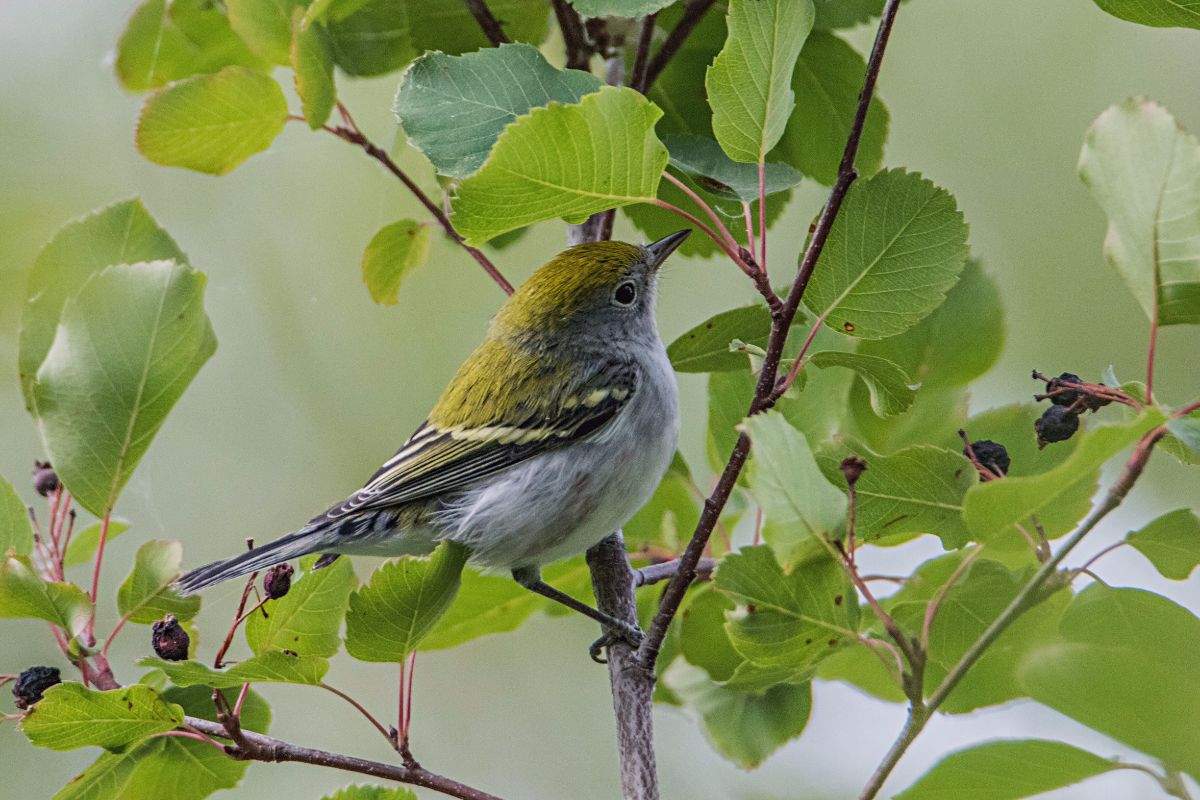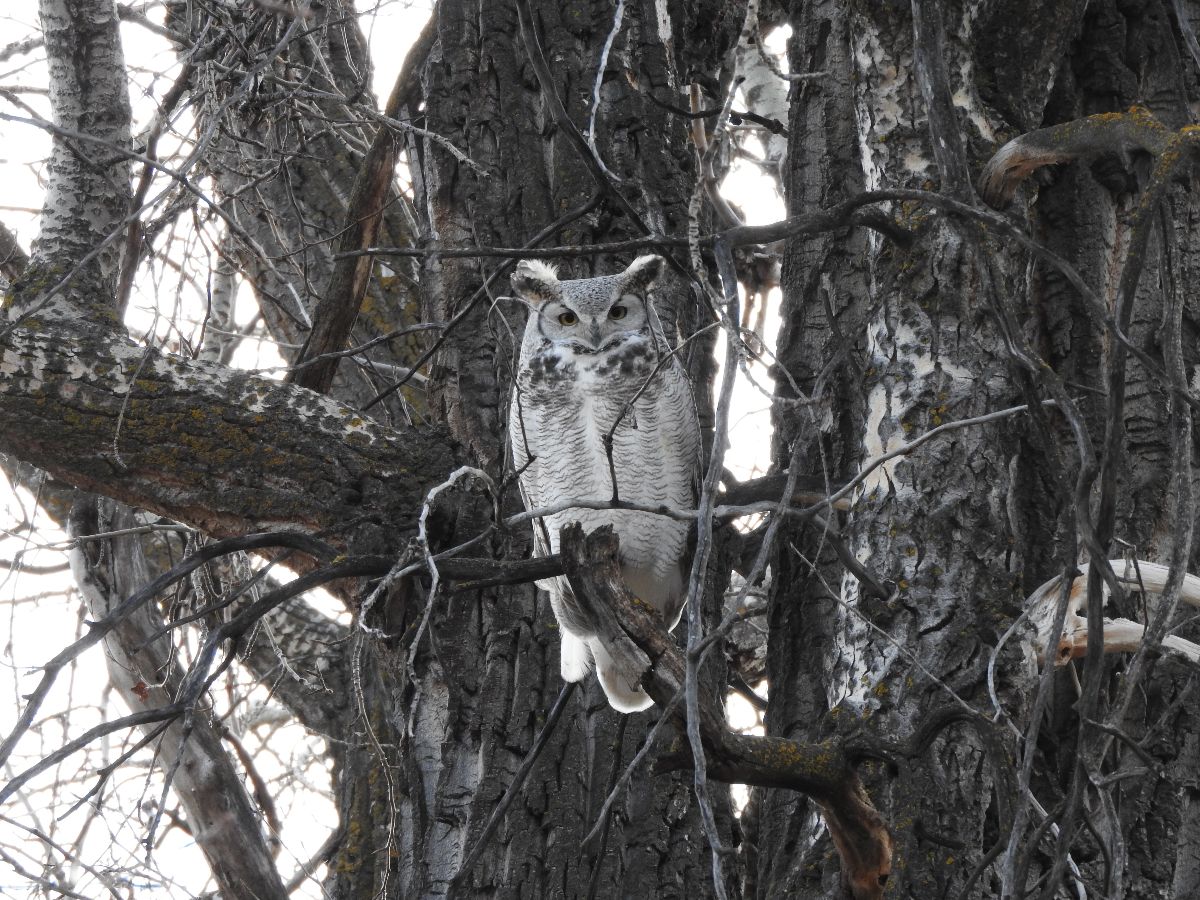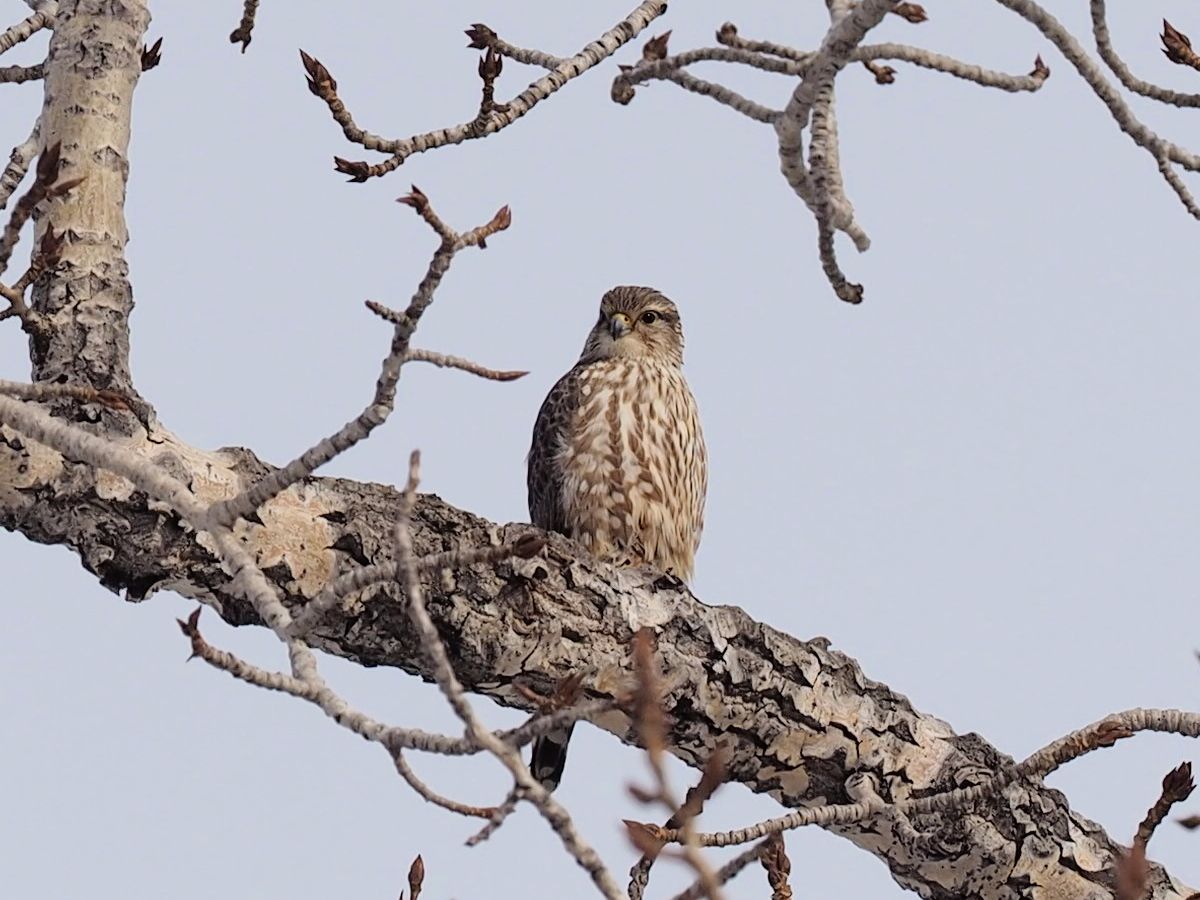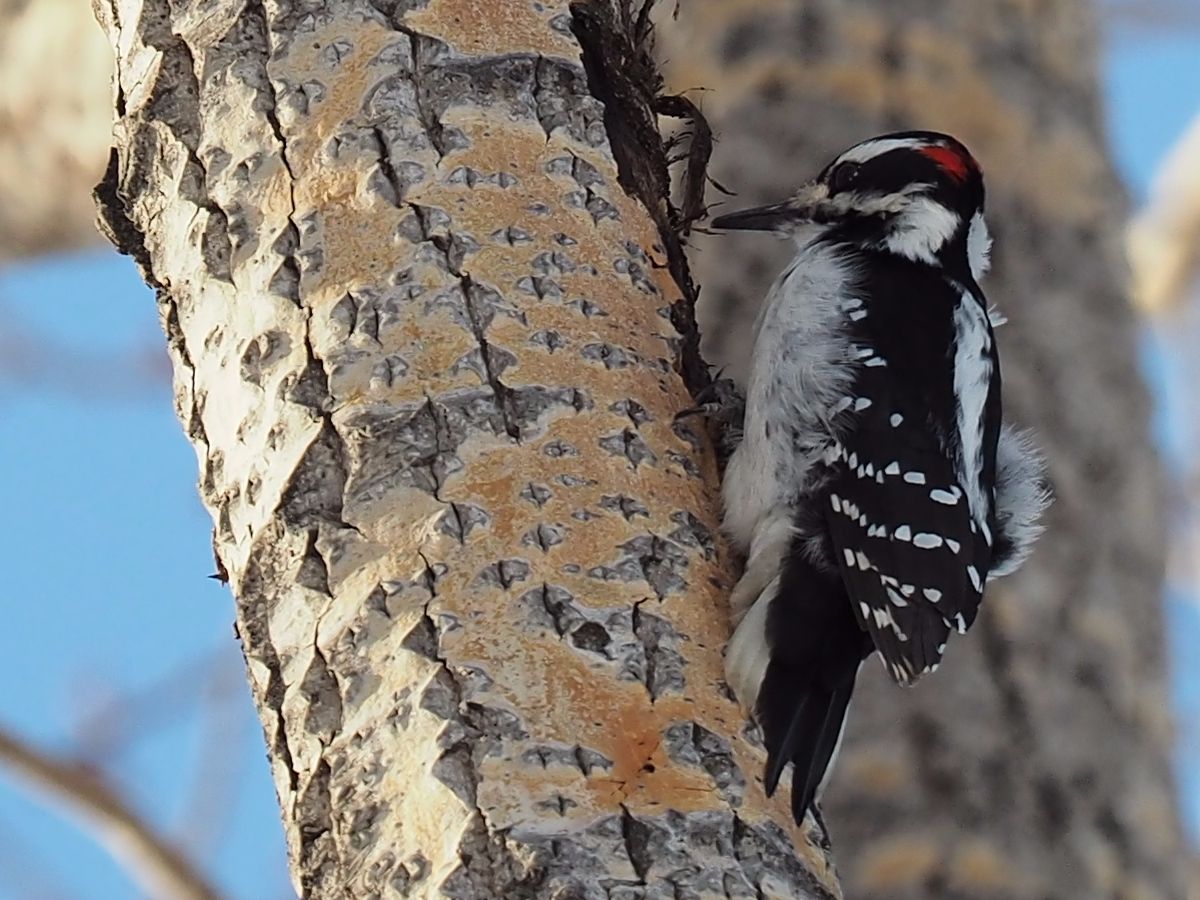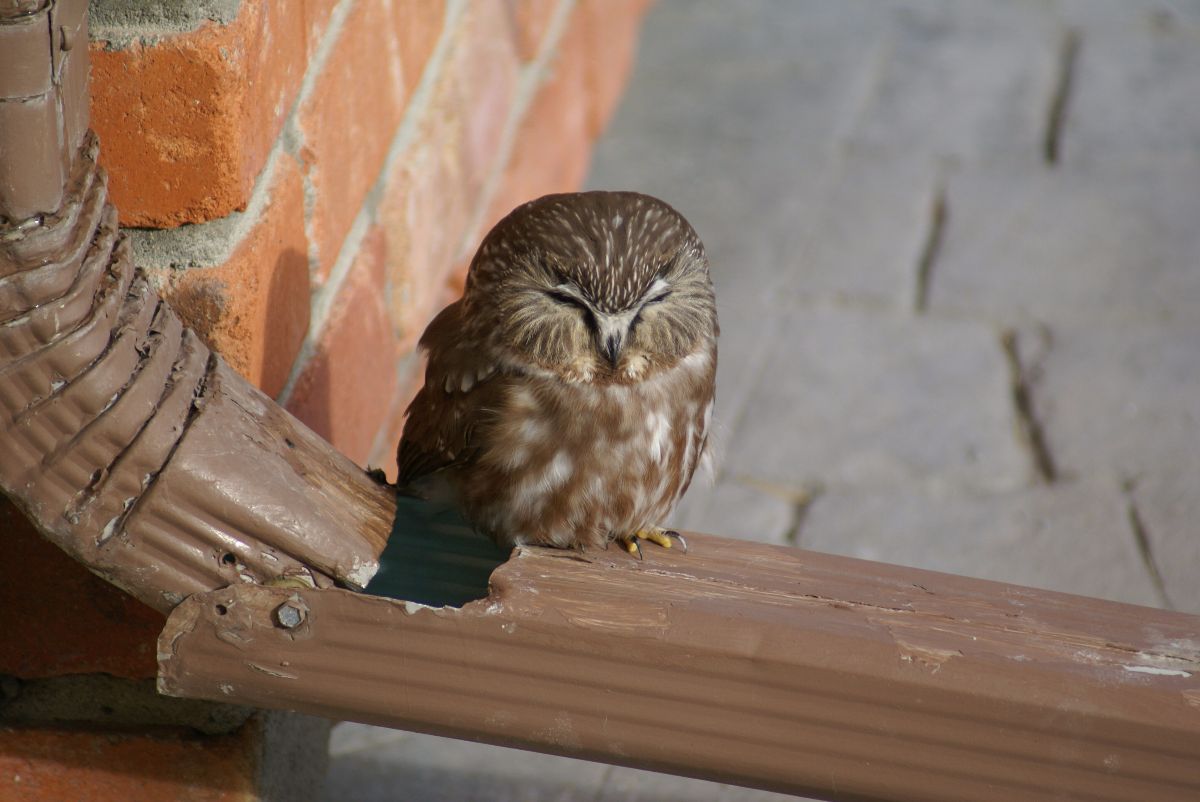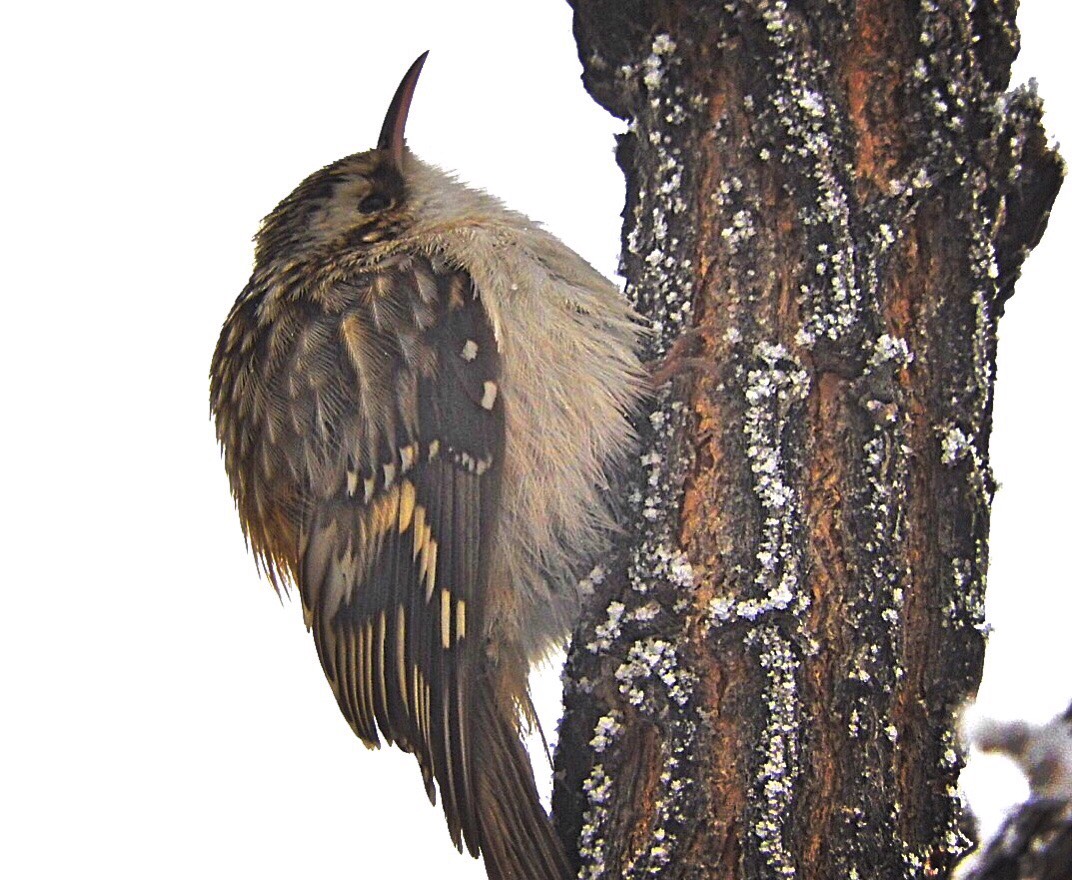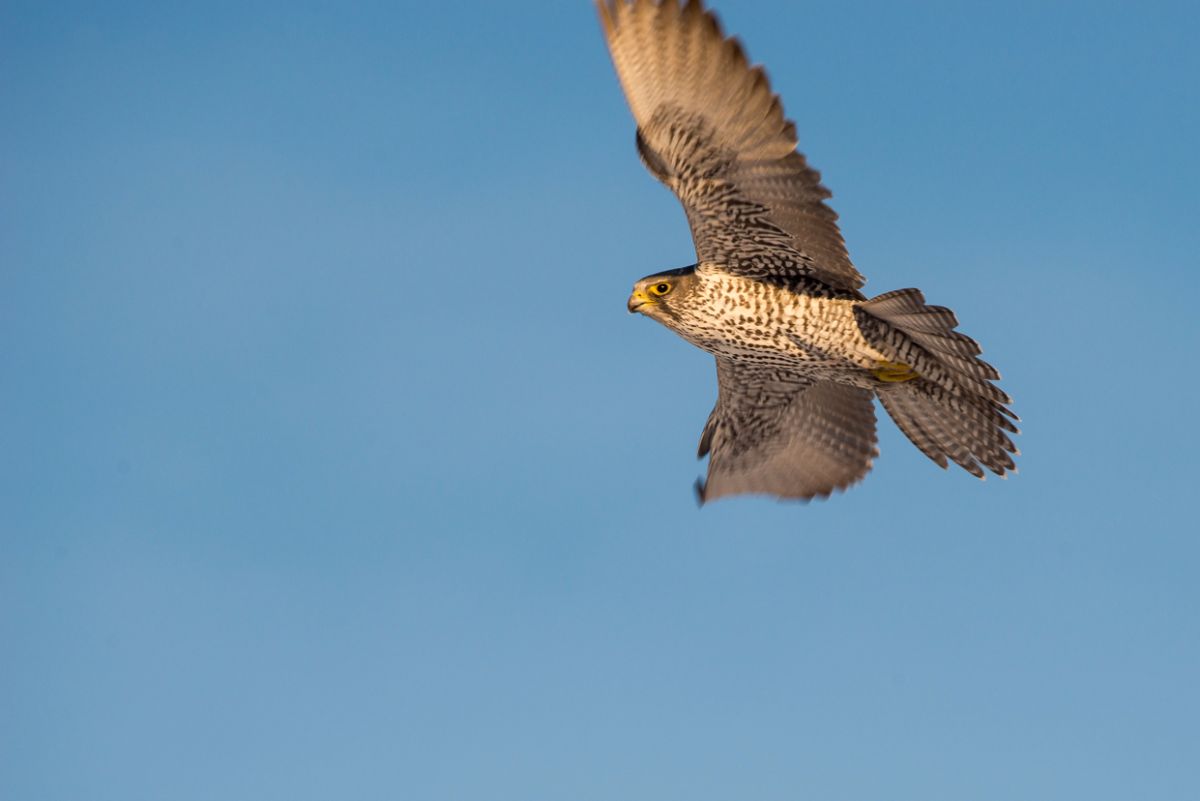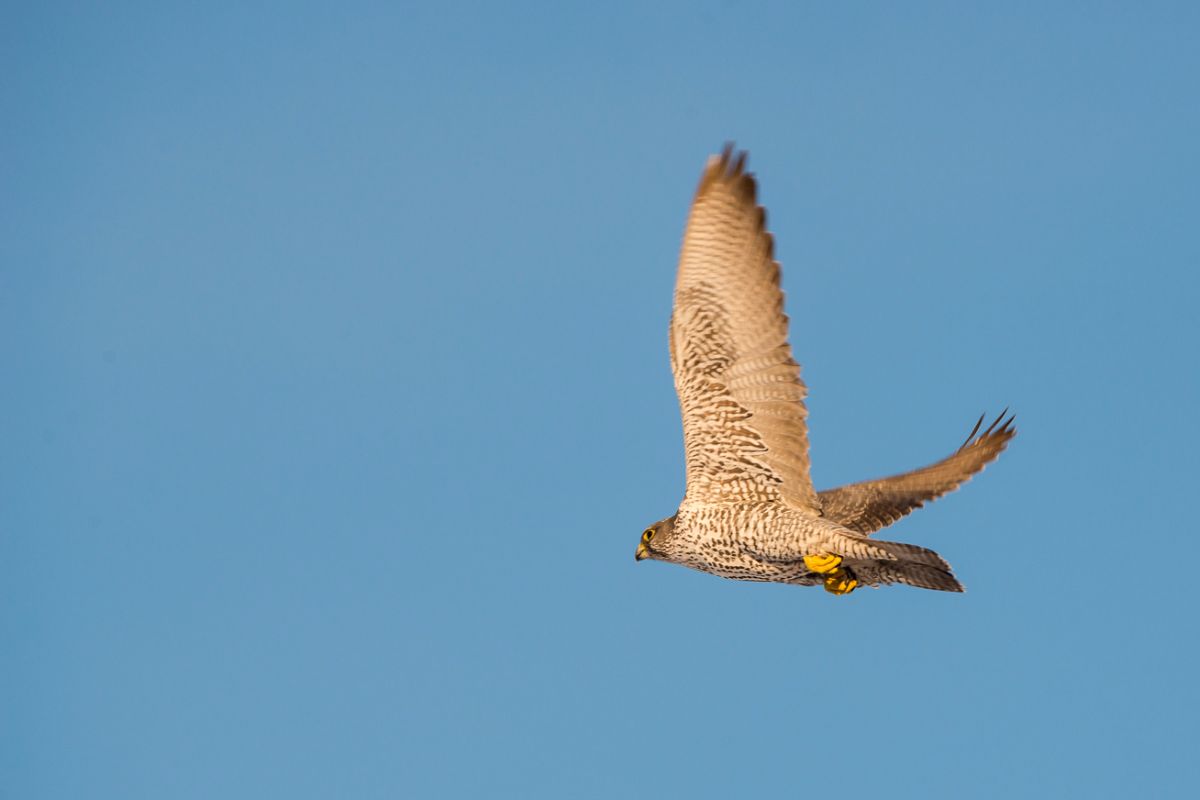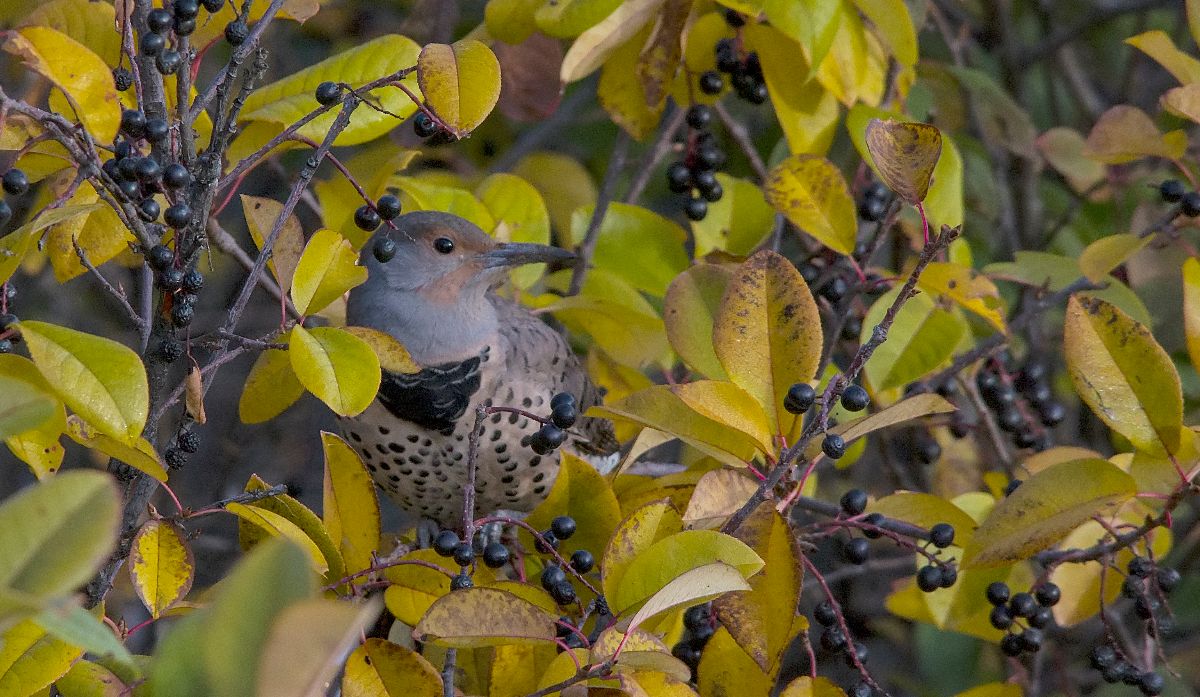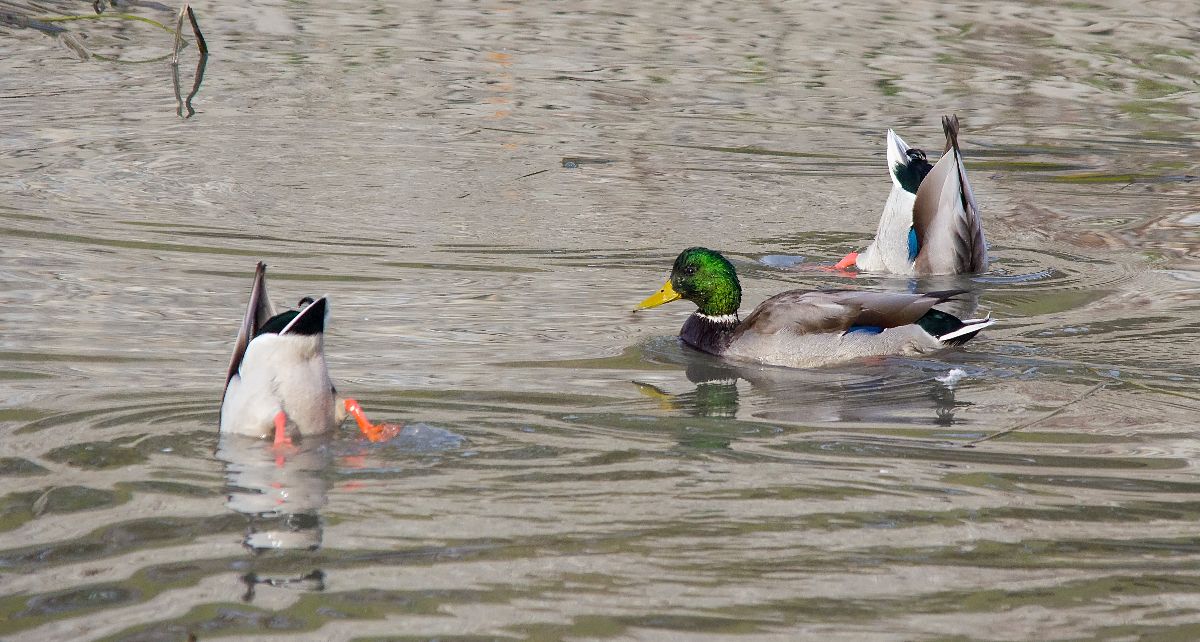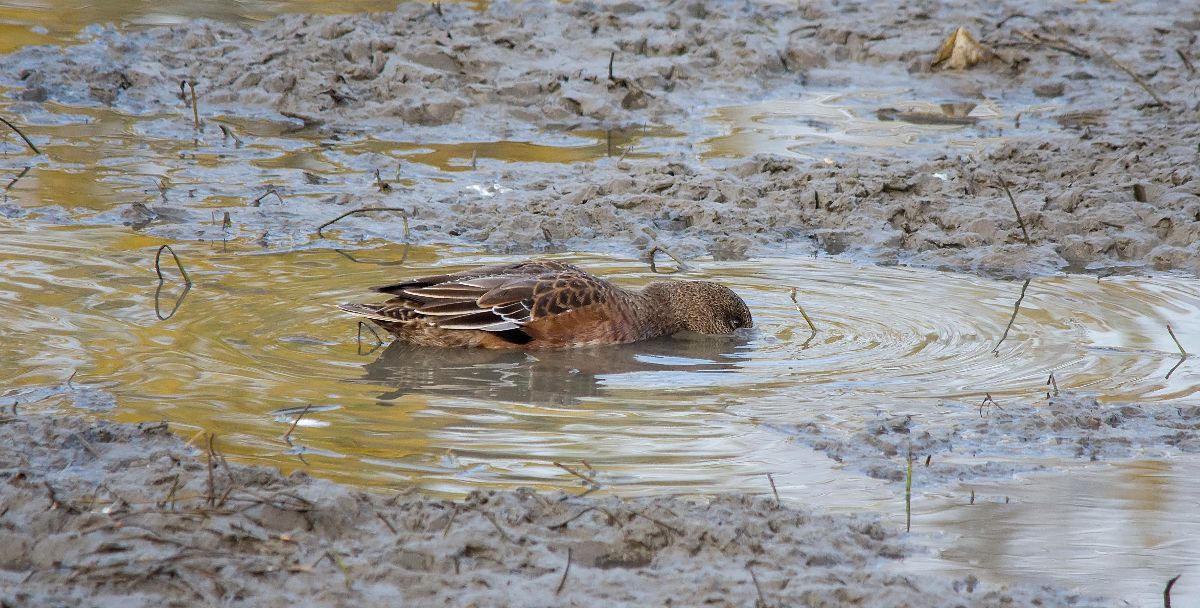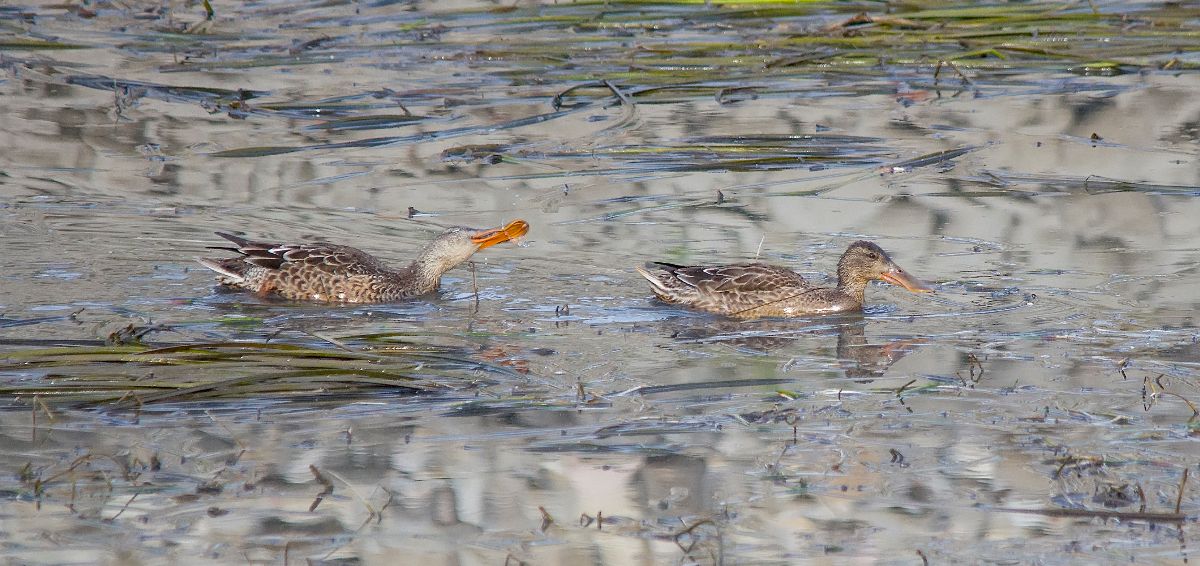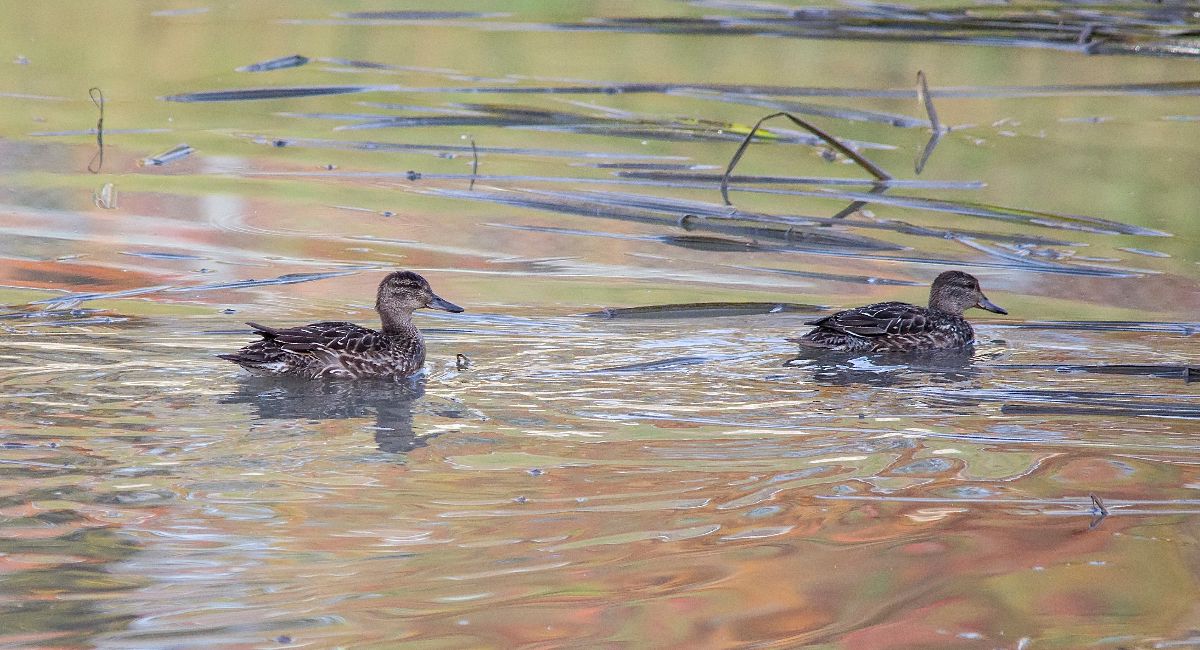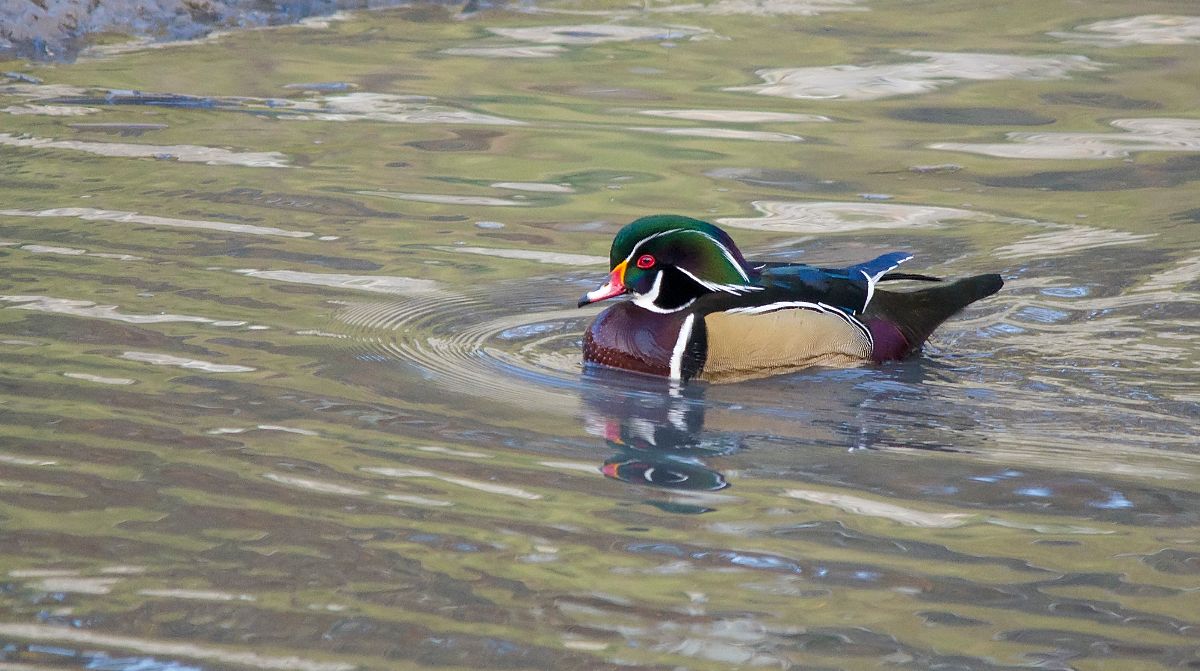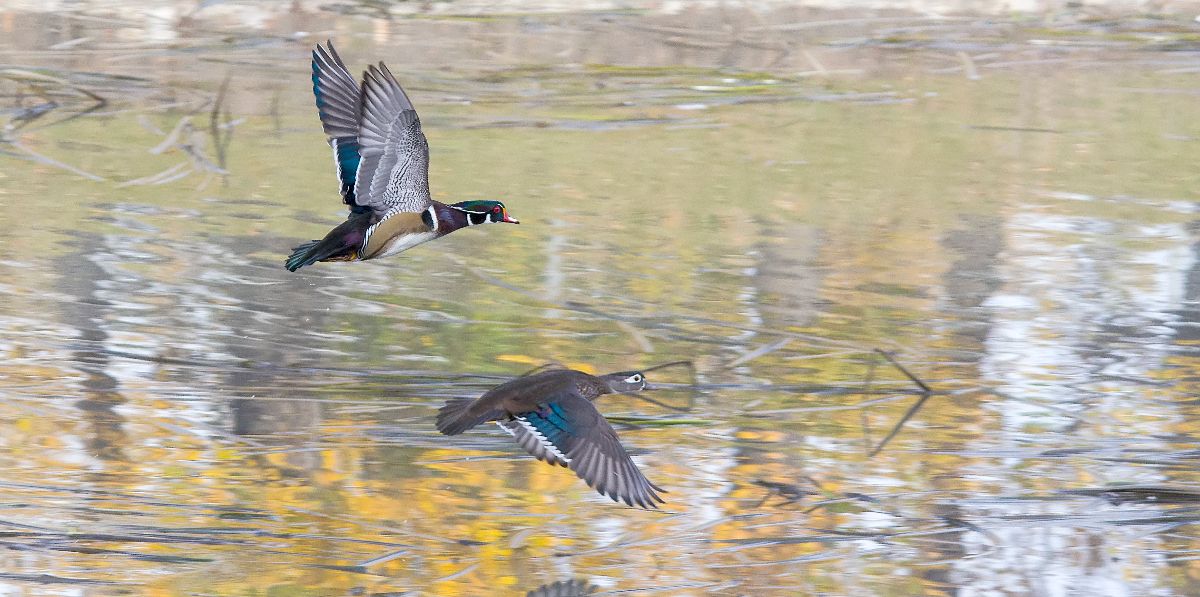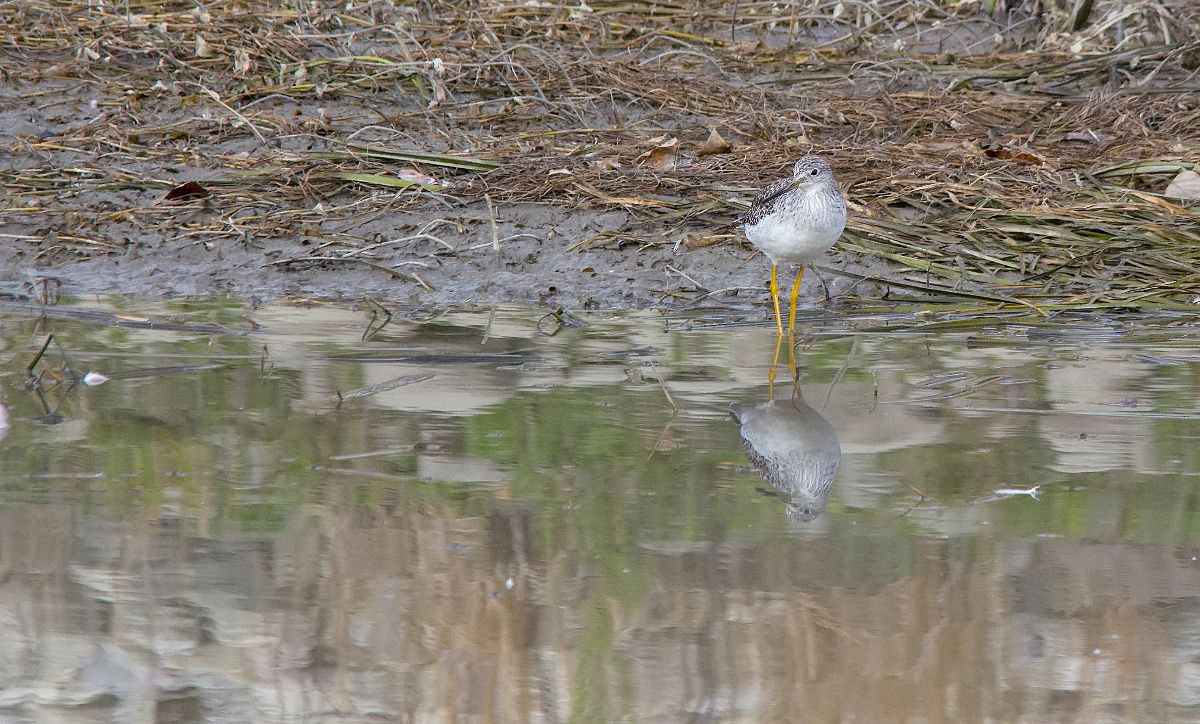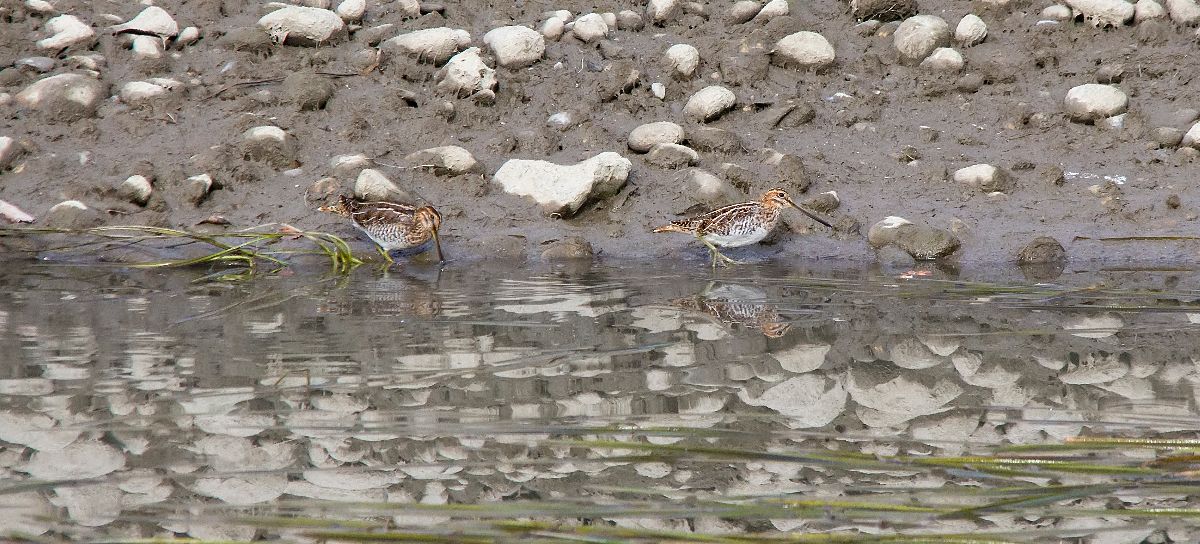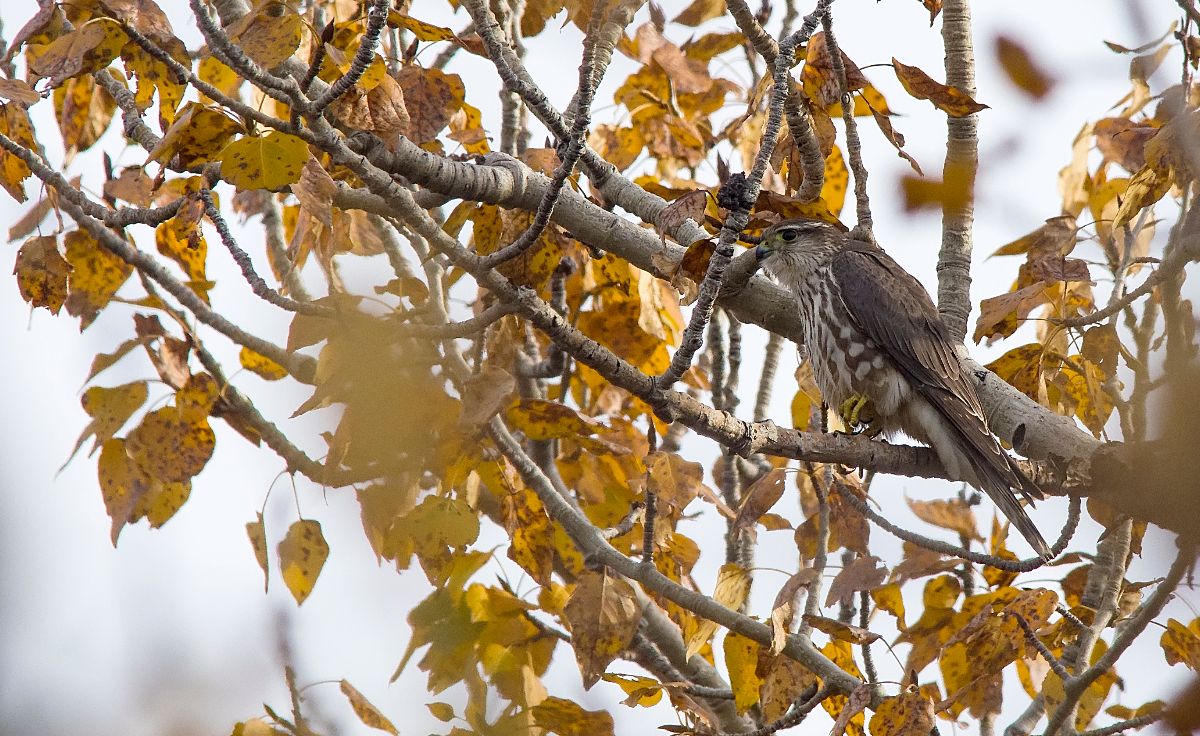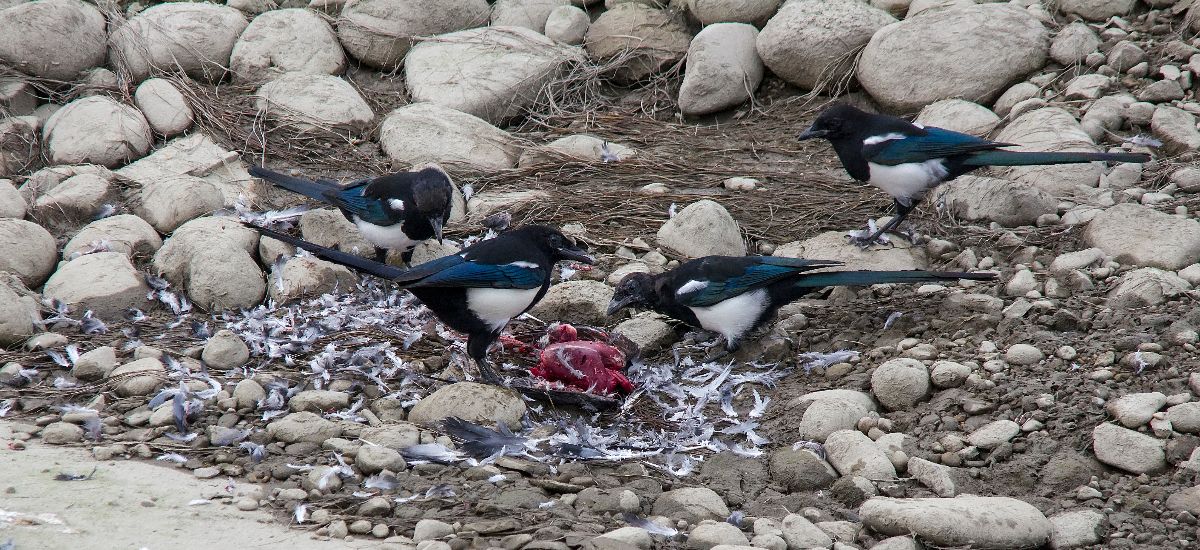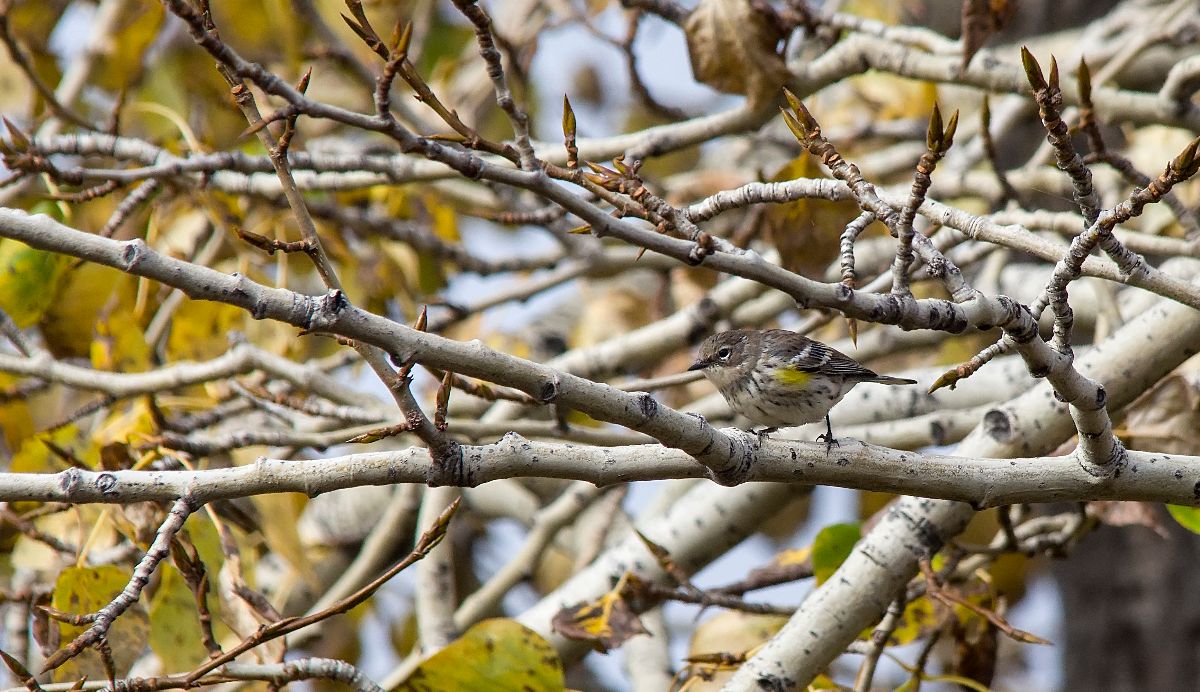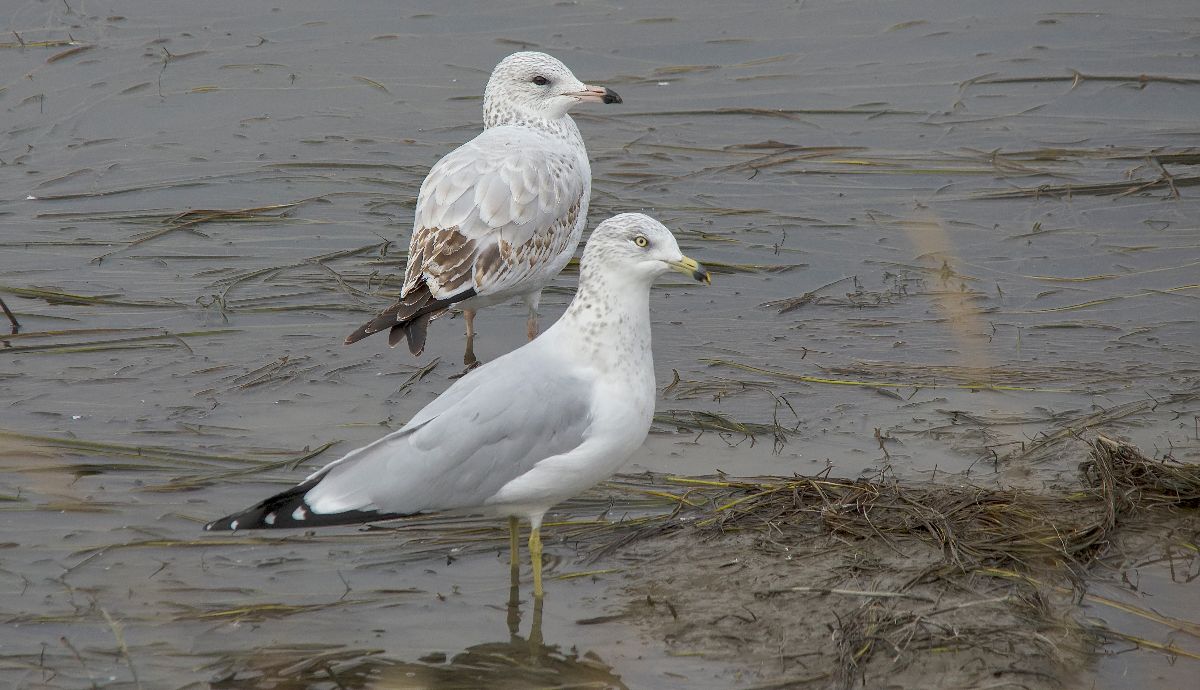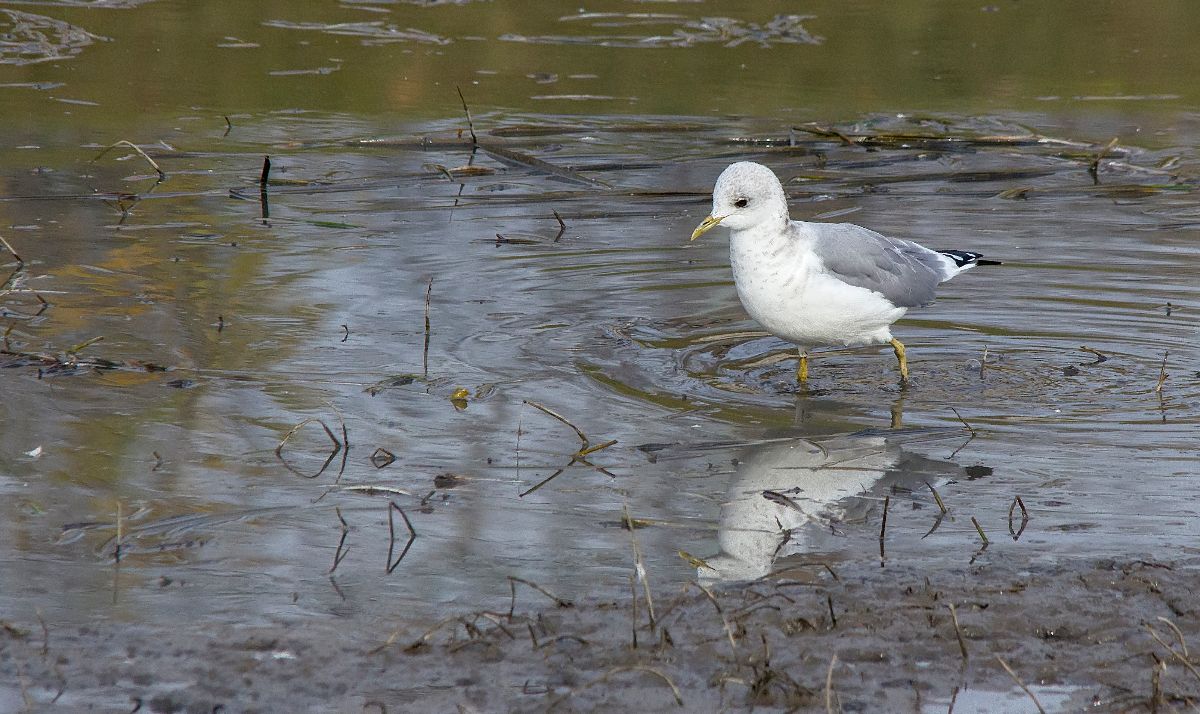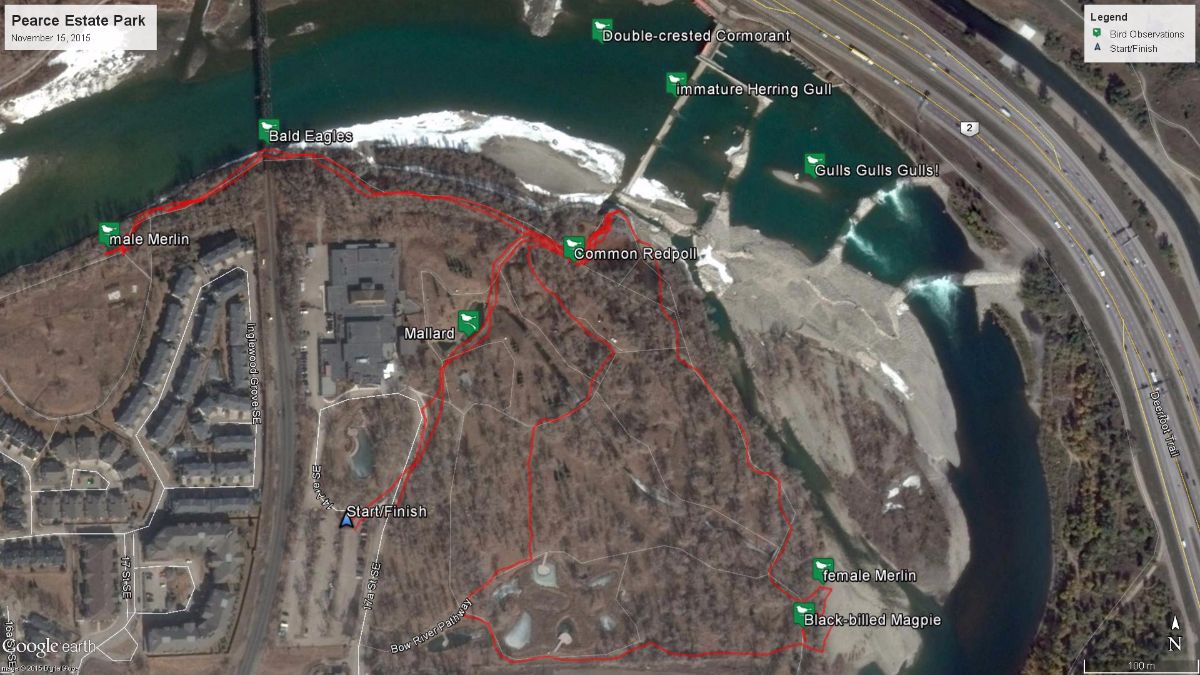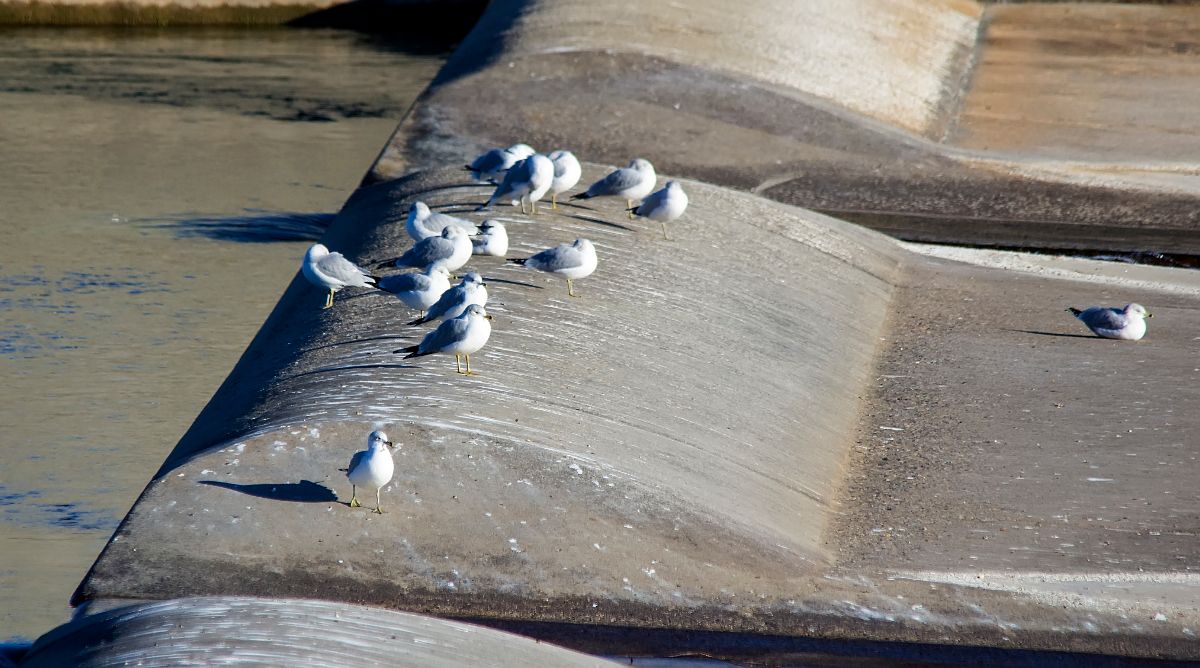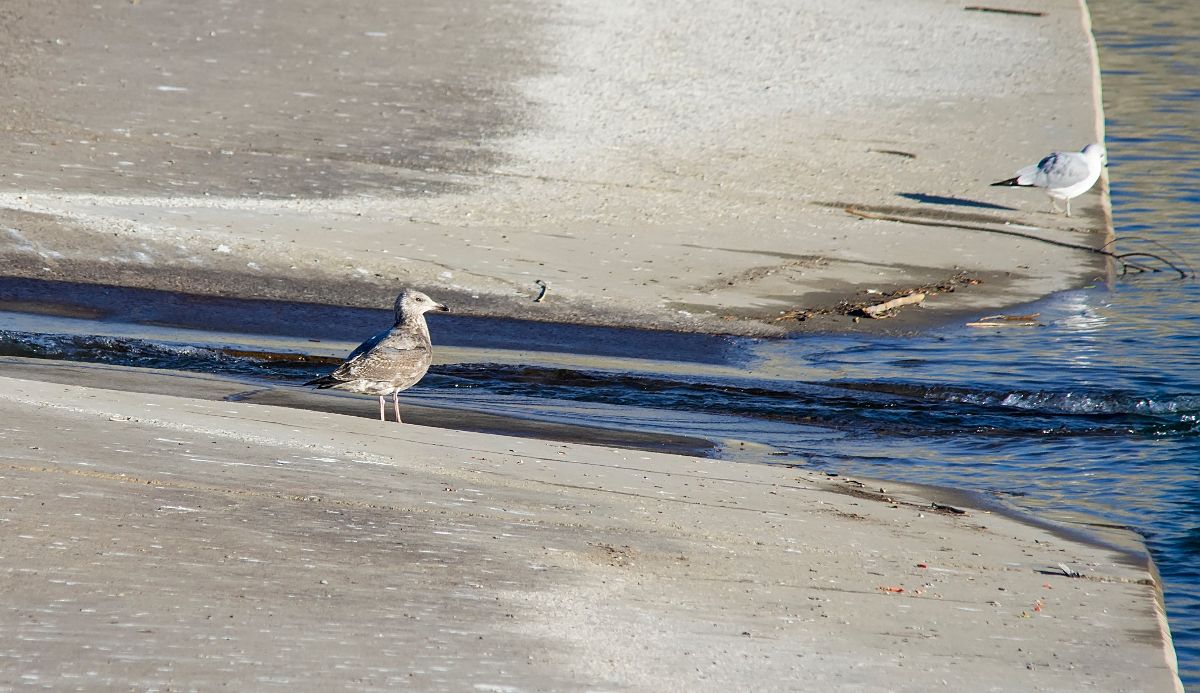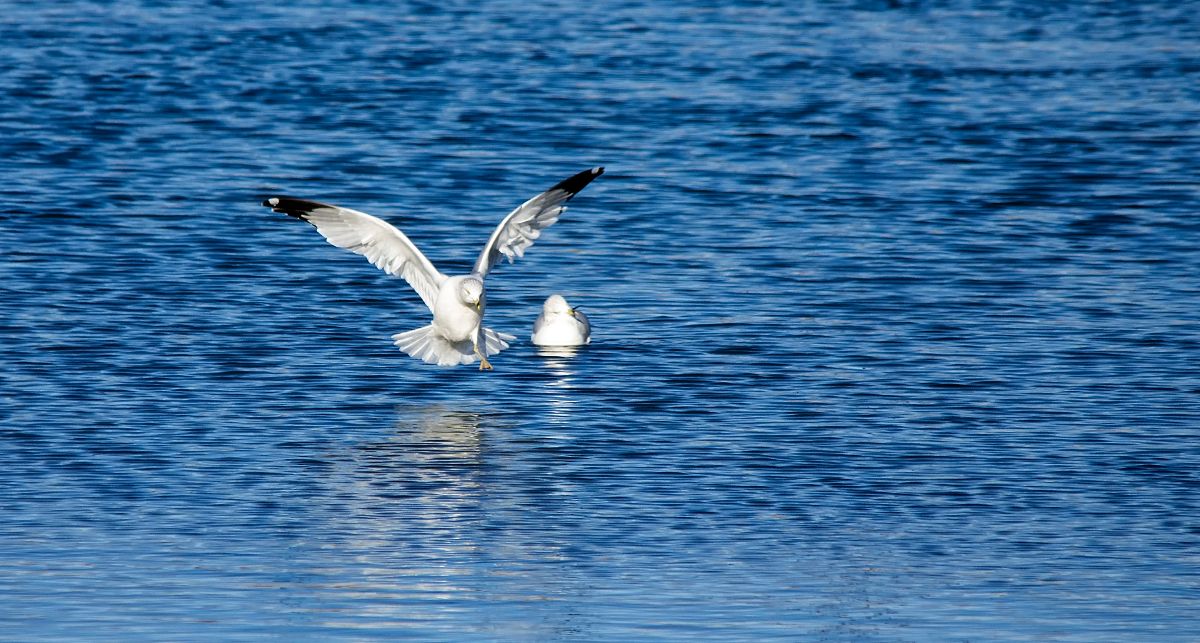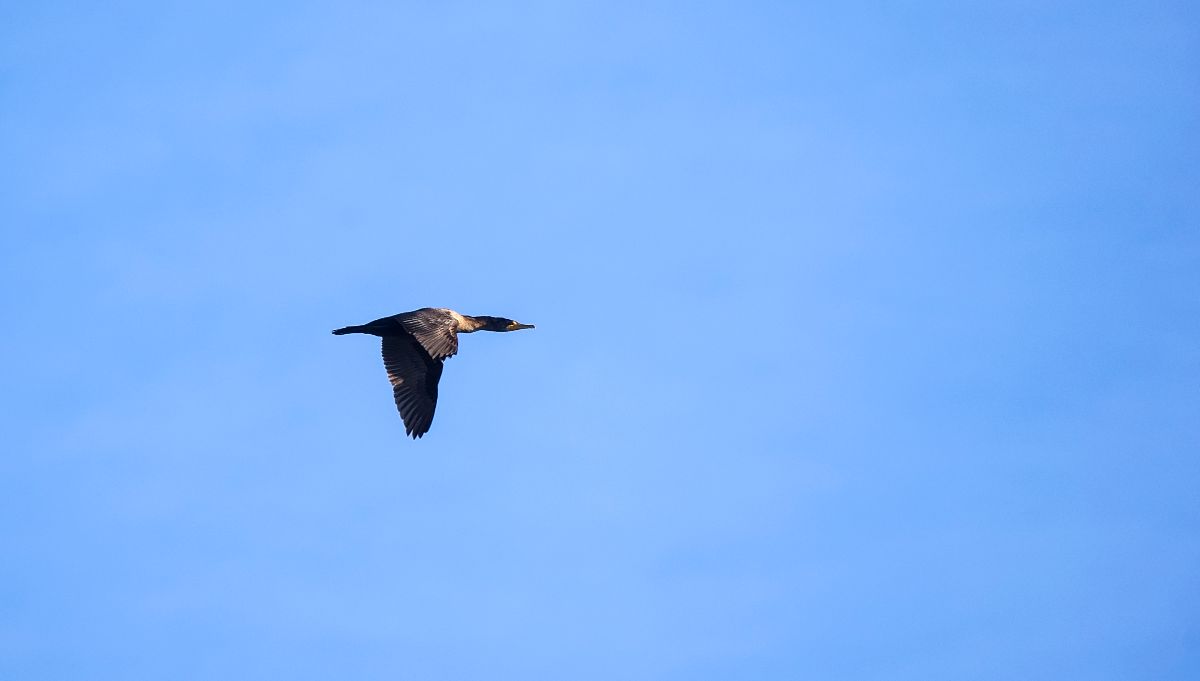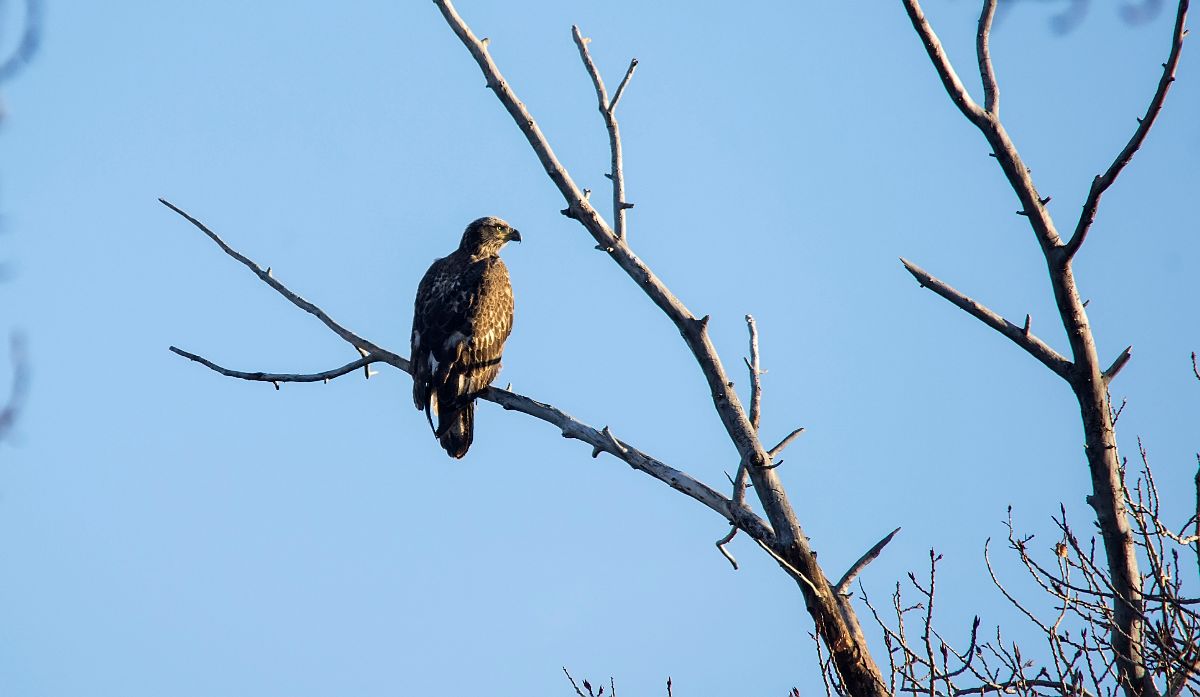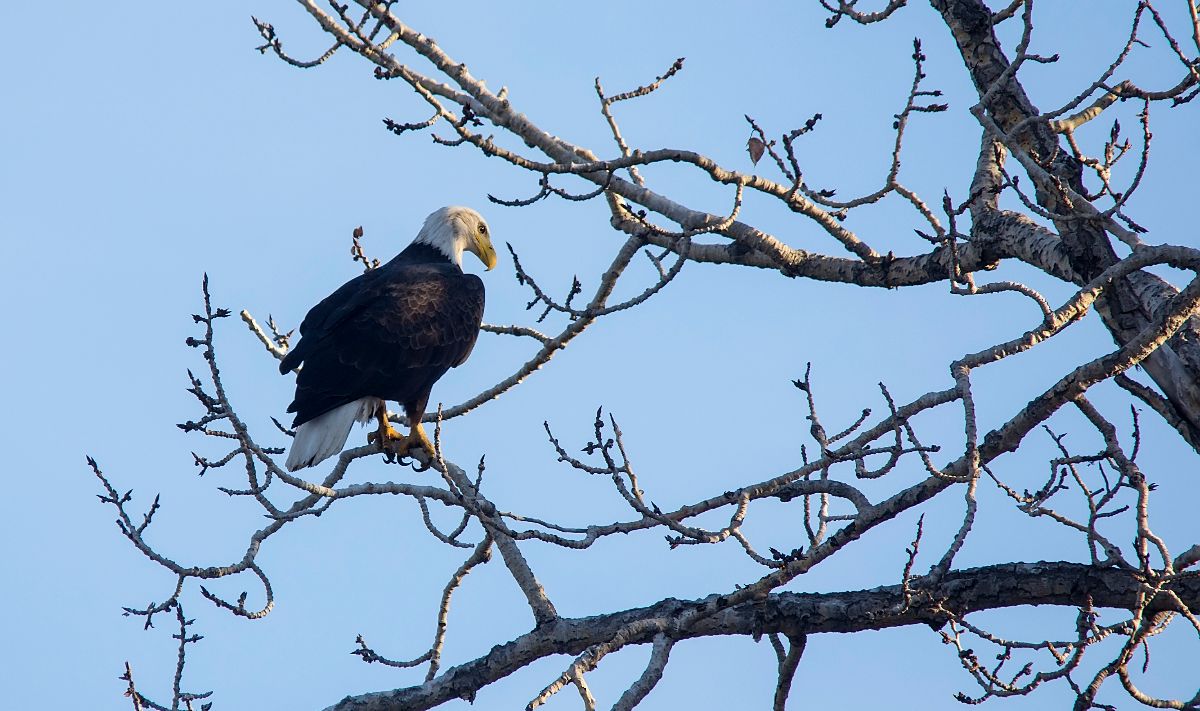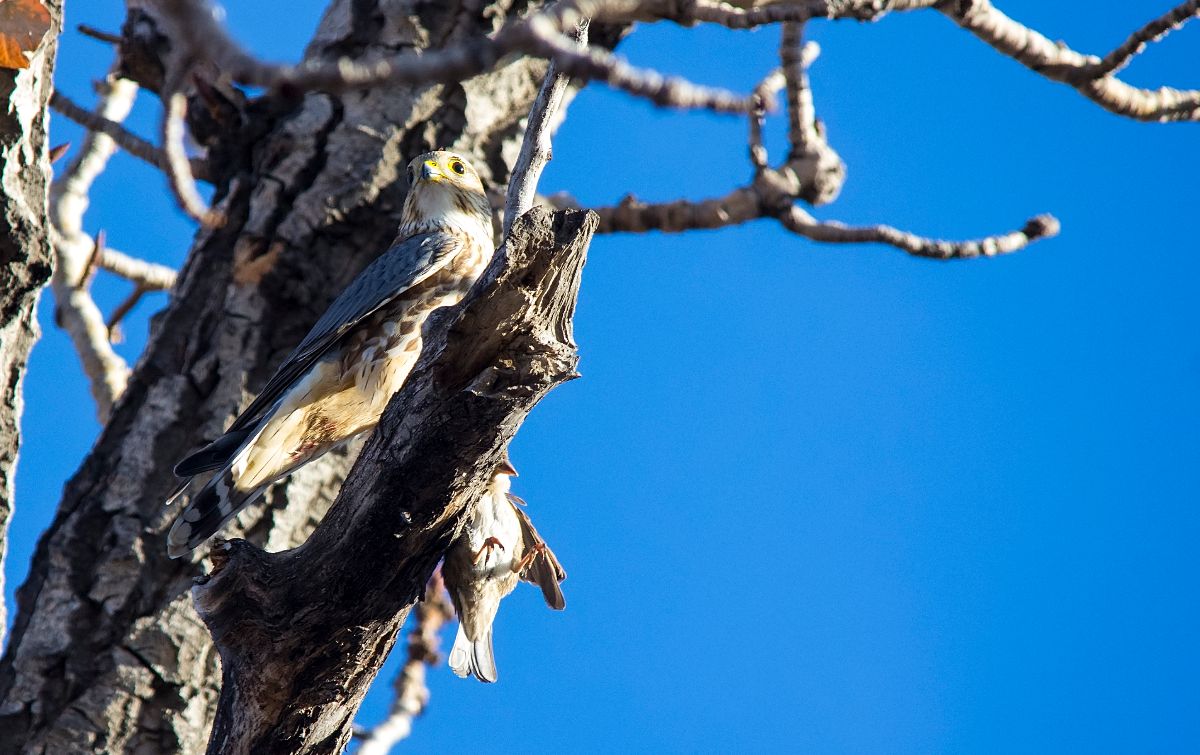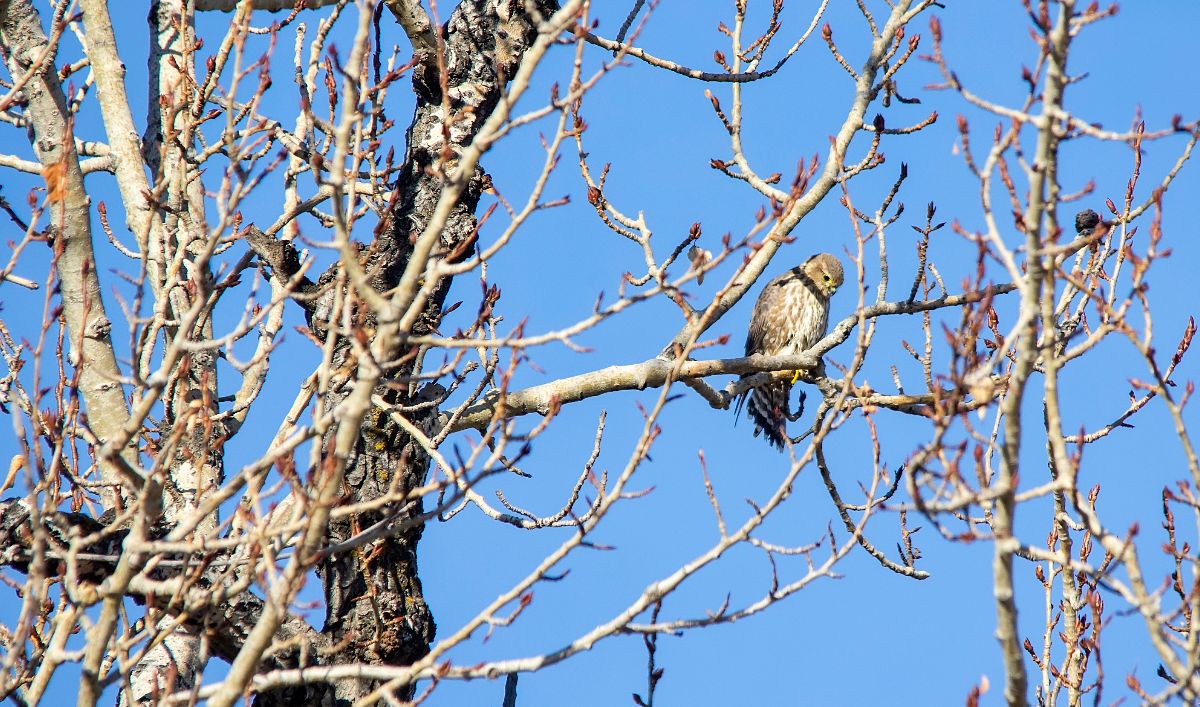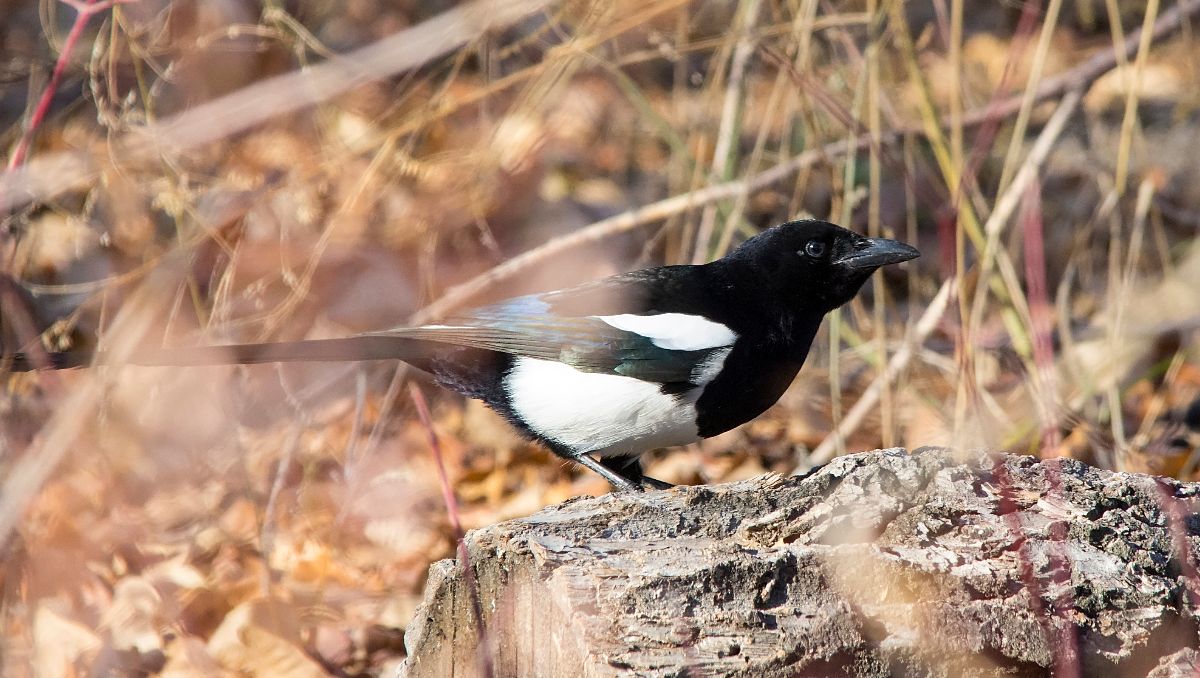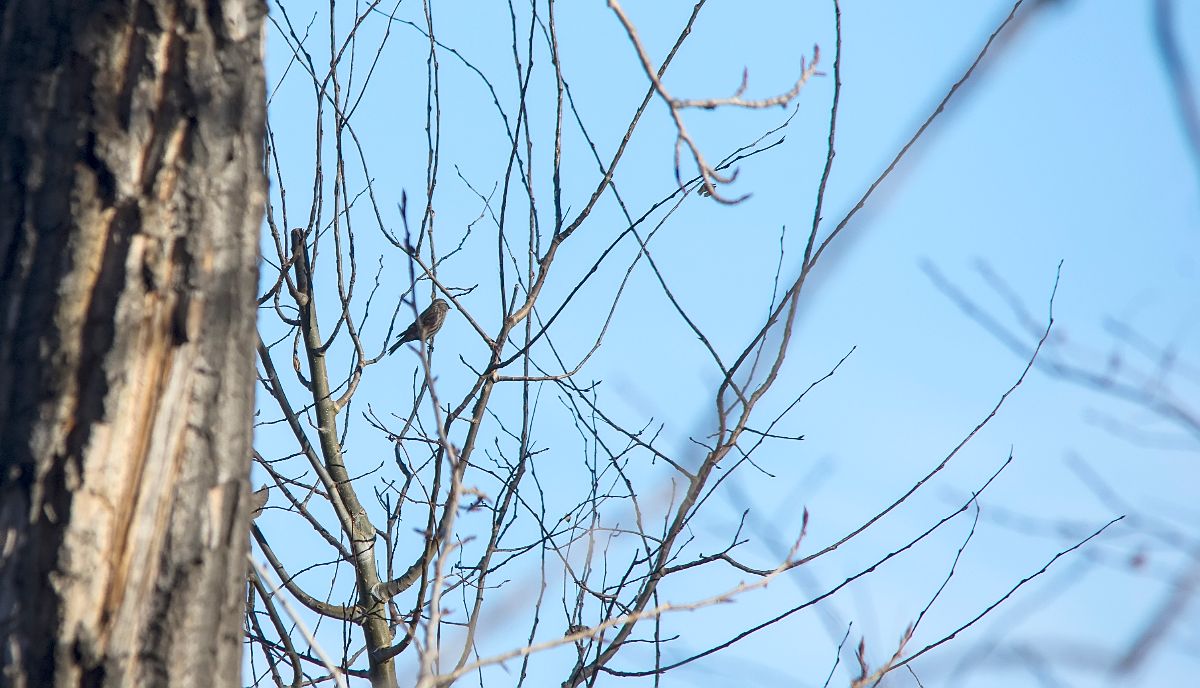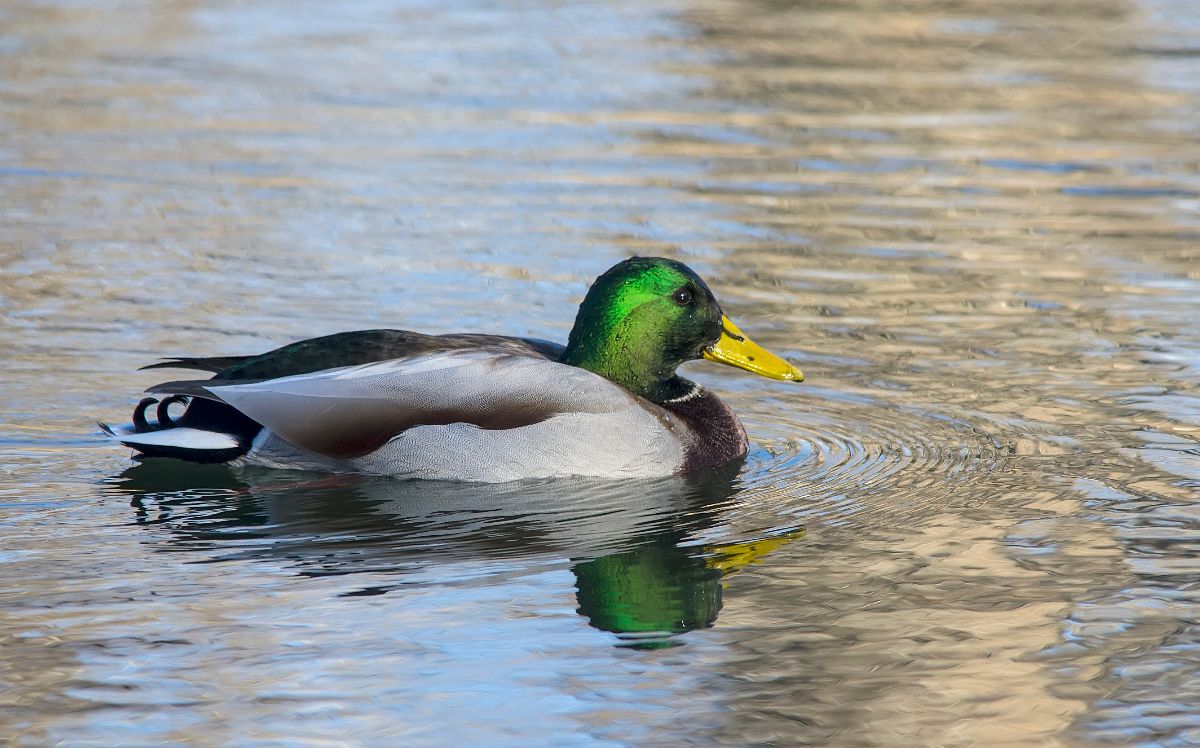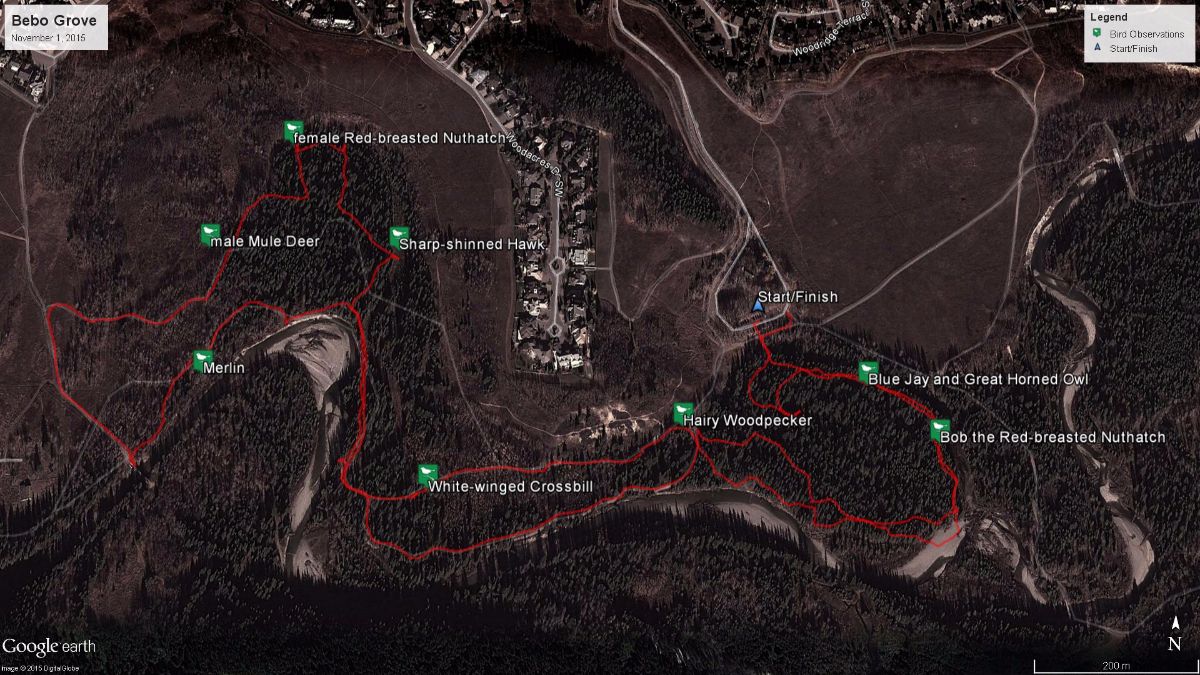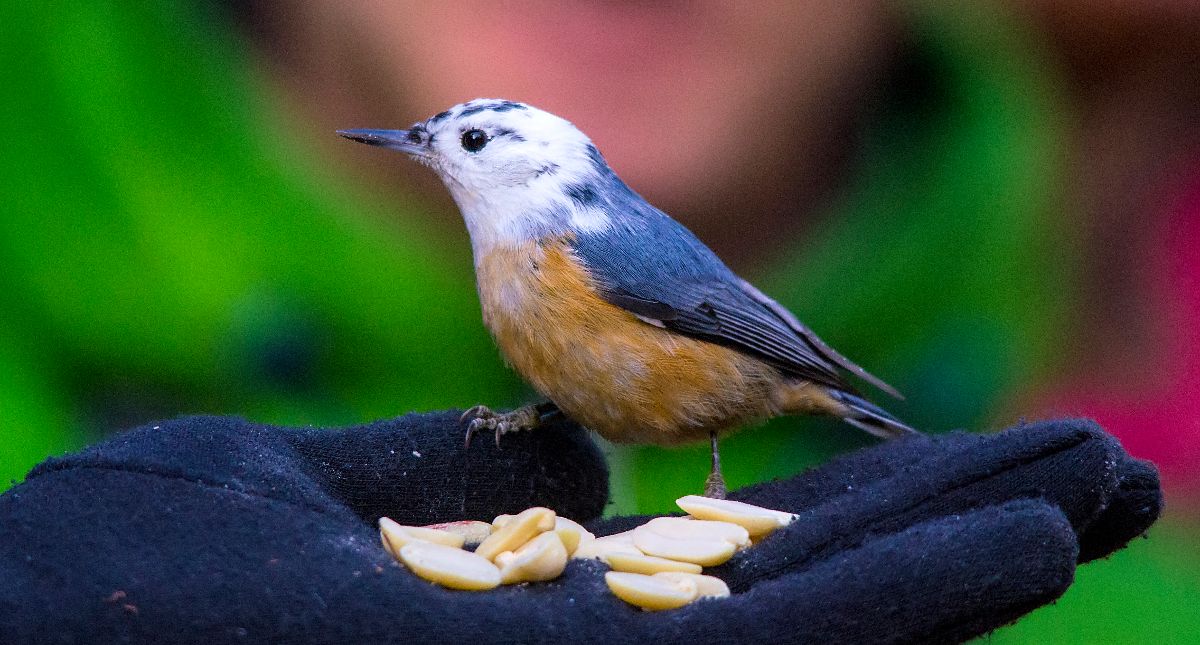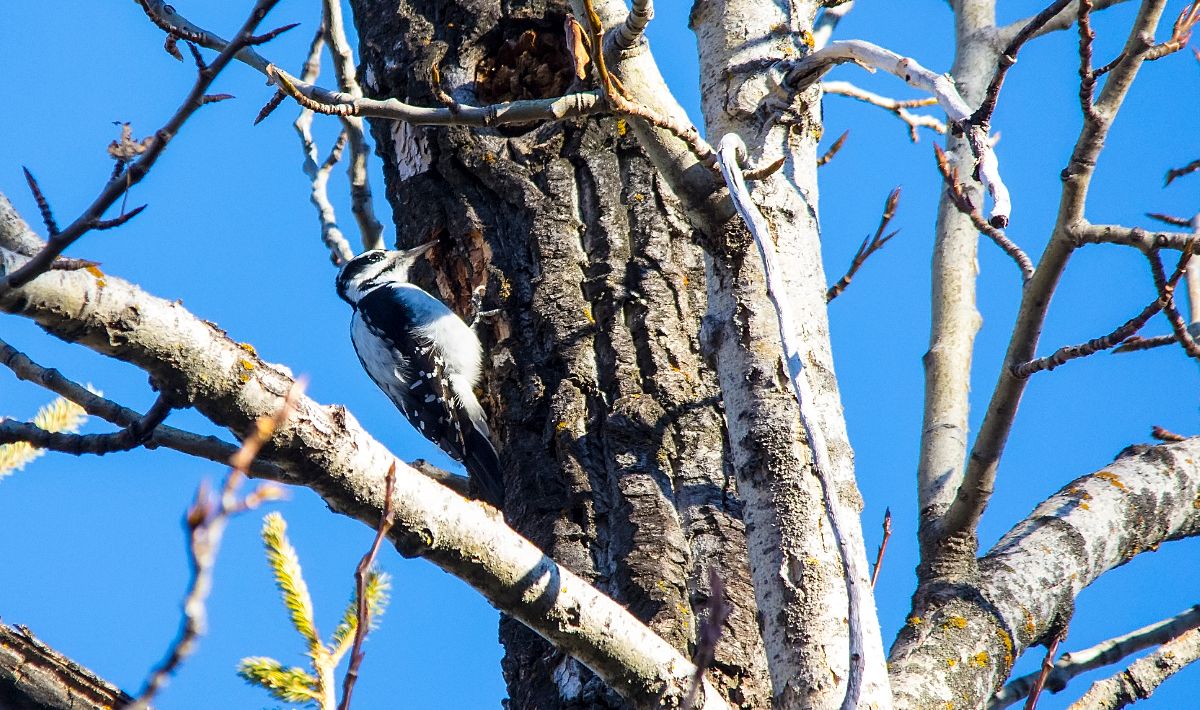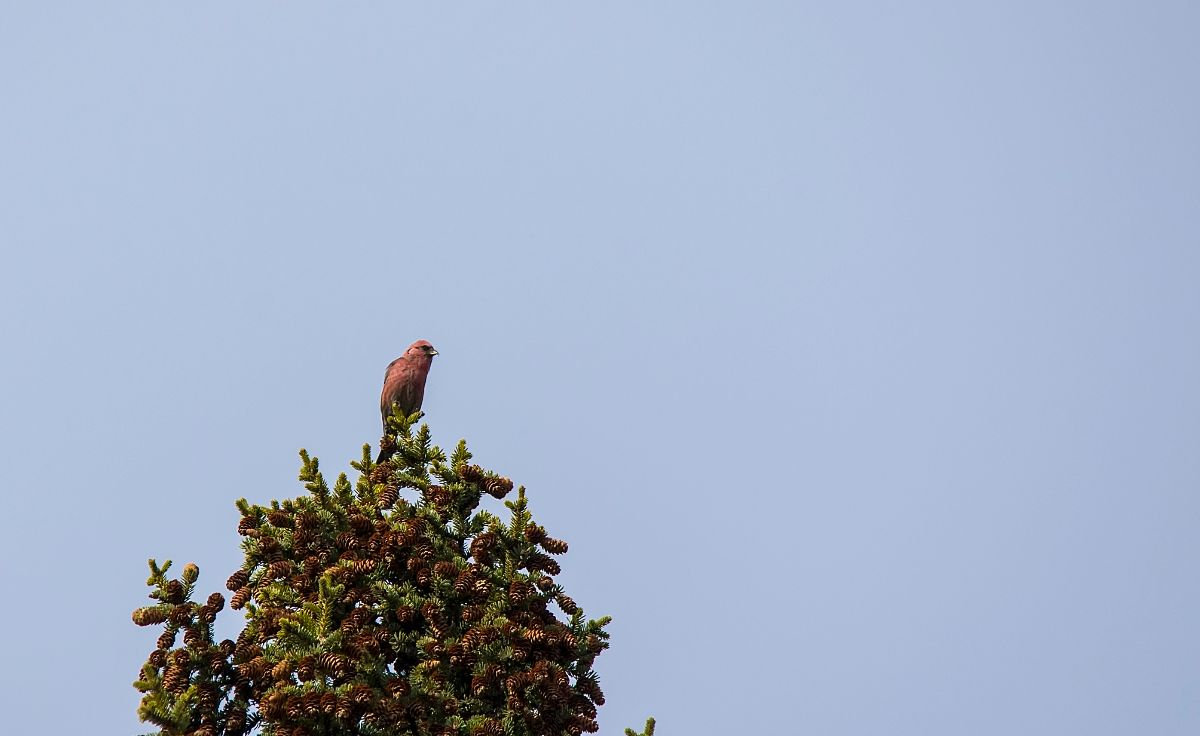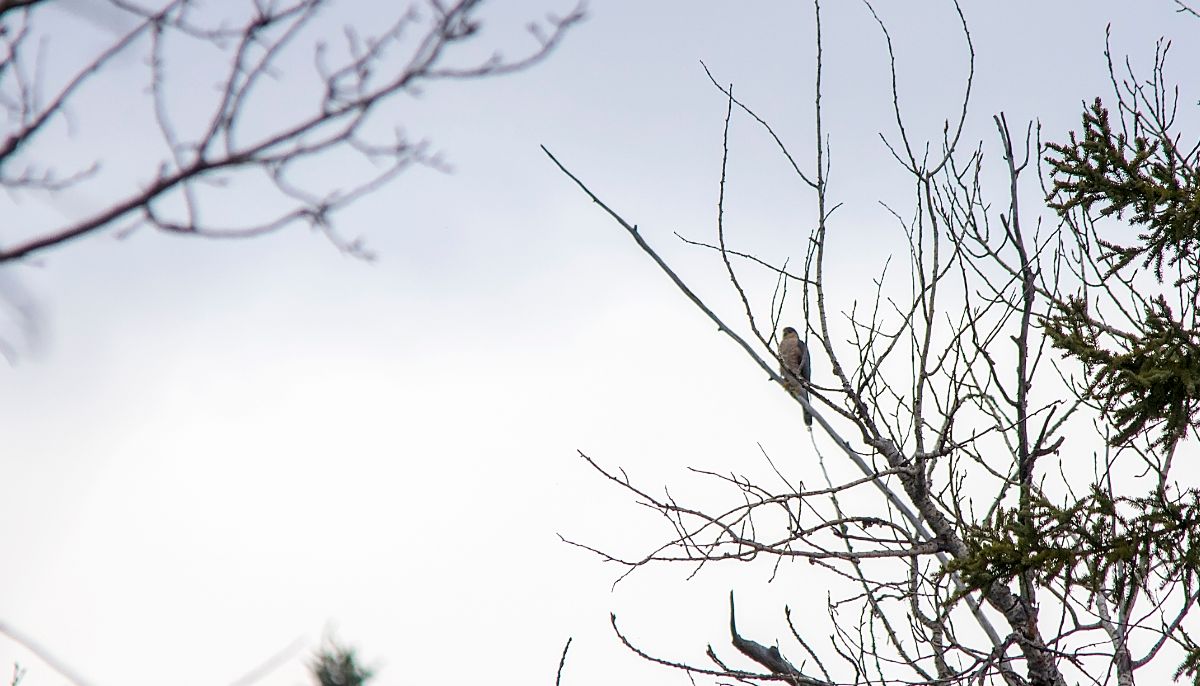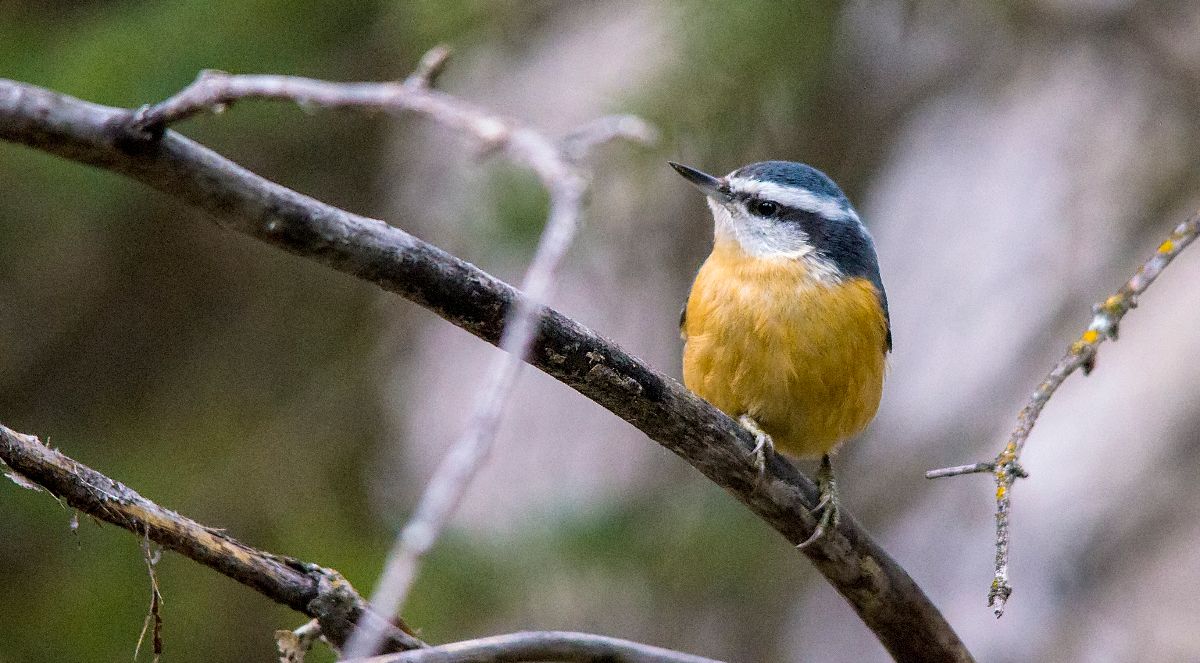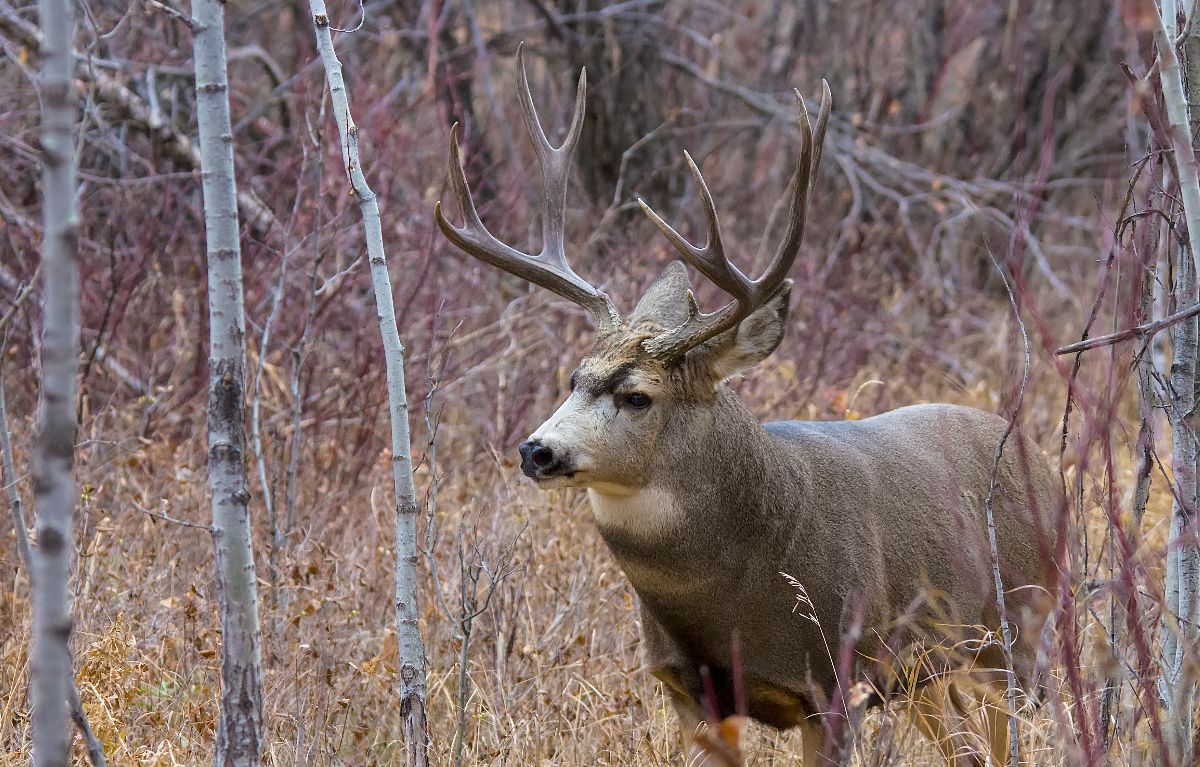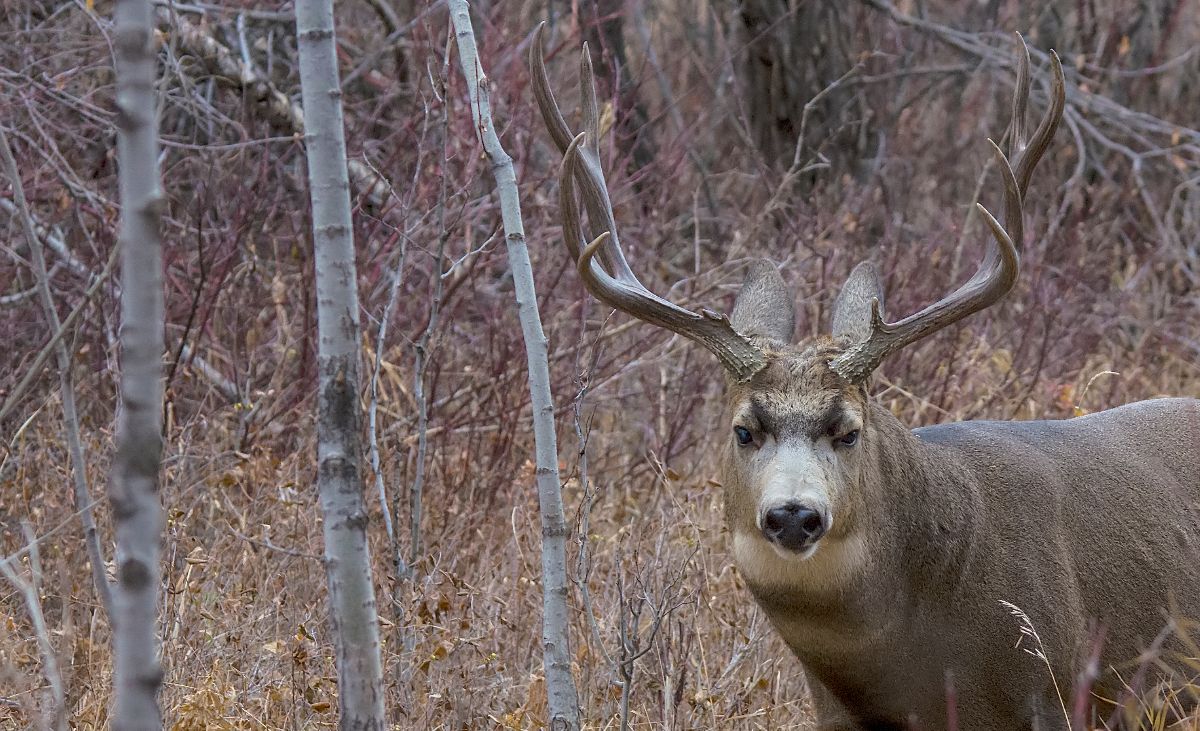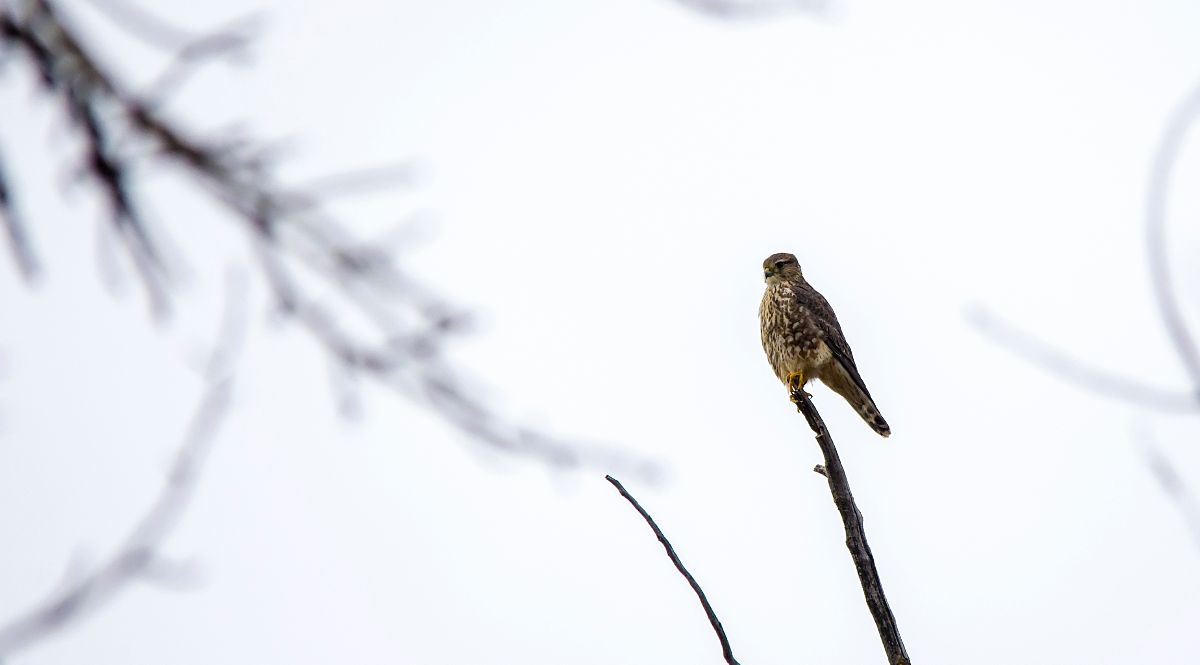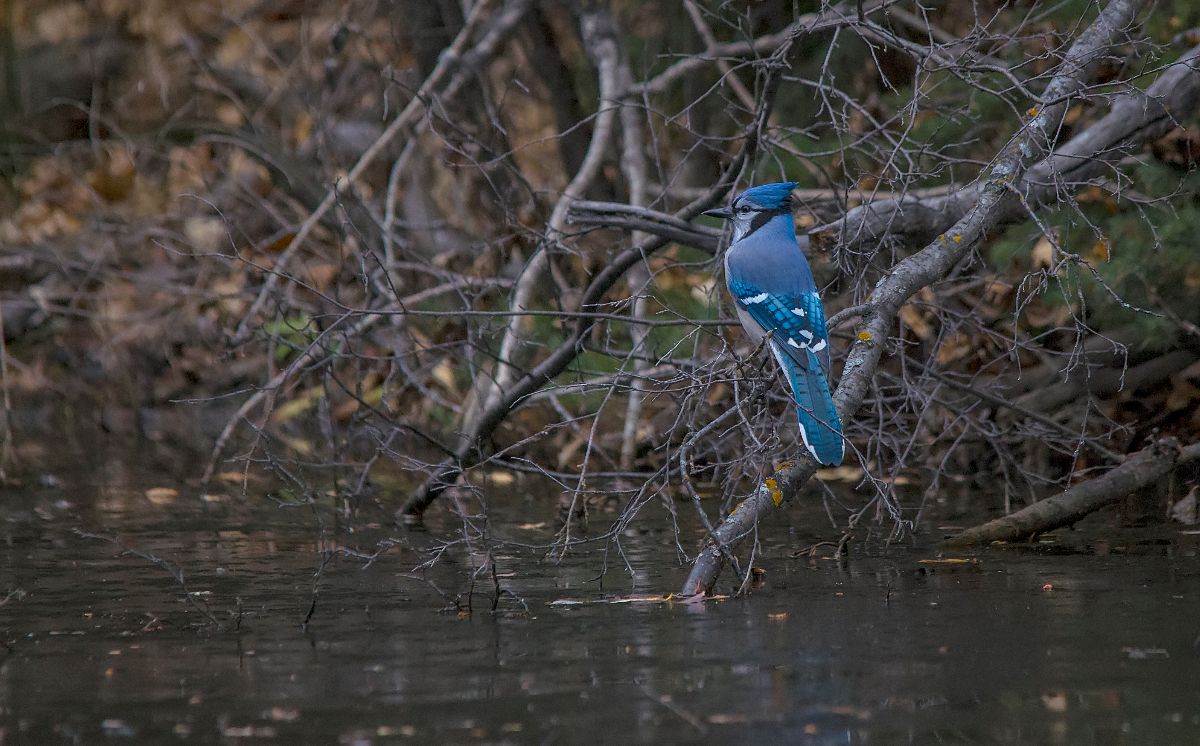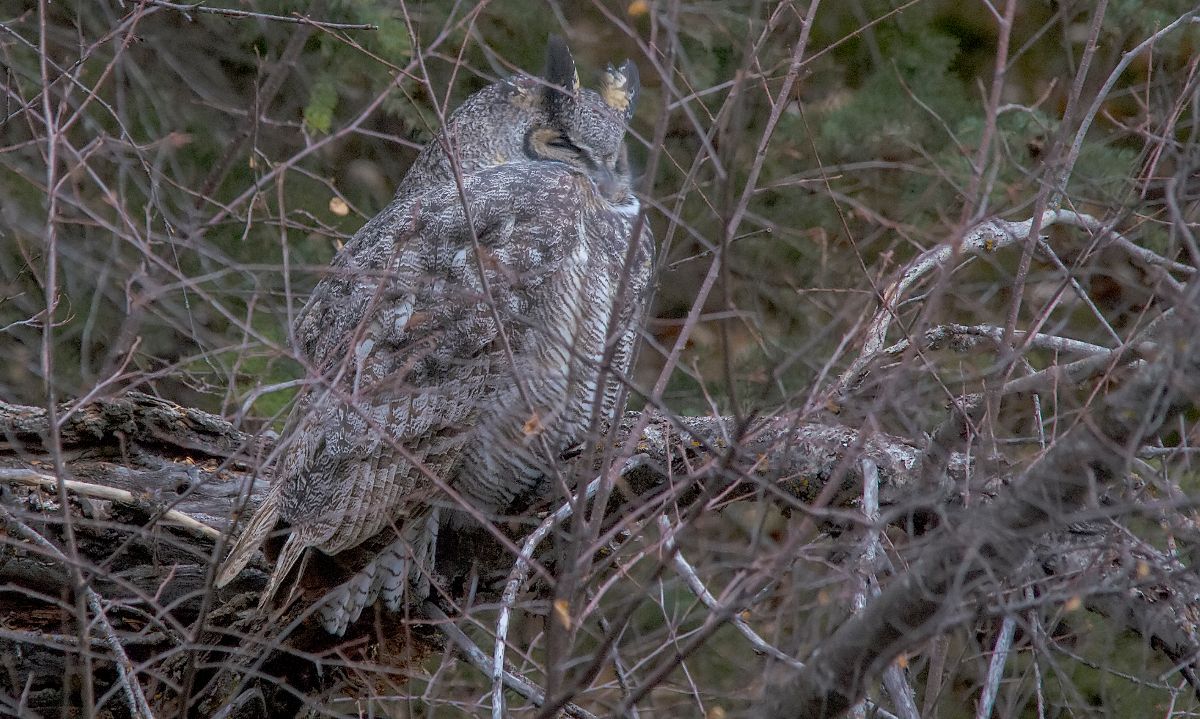By Cathy Warwick
Introducing Catherine Warwick – Cathy is a local birder who has been living in Calgary since 1997. She has been birding seriously for about fifteen years. She enjoys hiking, writing, and tavelling. Cathy has been writing an article about birds for the Lakeview News and Views newsletter for the past year or so. Birds Calgary will be featuring her new articles here monthly, and reposting some older ones too. Welcome aboard, Cathy!
A Merlin in our Midst
You may have seen a Merlin swoop past and thought – “That is one fast Robin.” This small but fierce falcon is a very fast flier, so fast it’s usually a blur. So you can be forgiven for mistaking it for a Robin that has gone to the gym regularly and lost its big red belly, as well as gaining some wing definition. What unmistakably identifies it as a Merlin, however, is the call it is making as it swoops around. They make a loud, “Klee-klee-kleeee” sound in flight that evokes the wilderness. This call is drawn out and falls in volume as it happens. In addition to the sound you can look for a smart-looking striped tail and sharp wings should it happen to land and give you an eyeful.
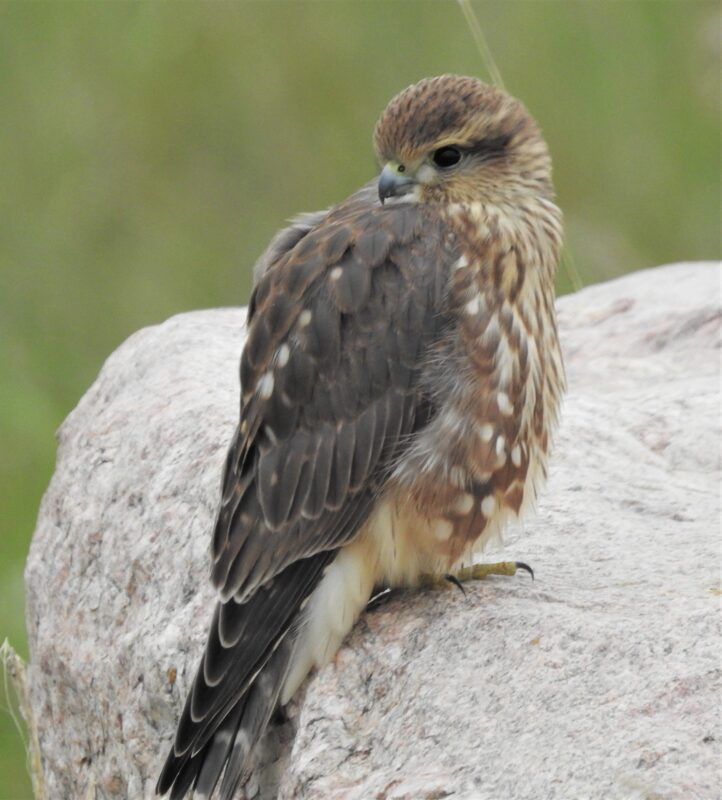
In Calgary I have seen them at the tops of trees, speeding around and calling out noisily. Sometimes they will have Magpies and Crows chasing them. This drama in the birding world is understandable when you find out that Merlins don’t build their own nest, they essentially take over the nest of a Magpie, Crow or another raptor. How lazy! No wonder the Crows and Magpies try to chase them away. Merlins have been known to lay their eggs right on top of a domed Magpie nest. The mother Magpie would be moving her brood in a hurry. Pack your bags kids, a killer has moved upstairs!

The Merlin is one of the smallest raptors in Alberta and is pretty darn cute. They must be terrifying to songbirds however, swooping in and picking off the slowest. Songbirds are its main source of food. Consider this: A Sparrow weighs about one ounce, as much as a pencil, thus a Merlin is estimated to eat about 900 a year. It’s a lot of work! They need all their energy for their fancy aerodynamics, and can’t waste it on such mundane things as building a nest. Most of their kills happen in the air, probably because they are such terrific fliers. It’s no wonder little birds seem nervous all the time, one minute you’re flying around and the next you are snatched up by a pint-sized raptor. Merlins eat pigeons too, which are basically the same size as them, talk about fierce!
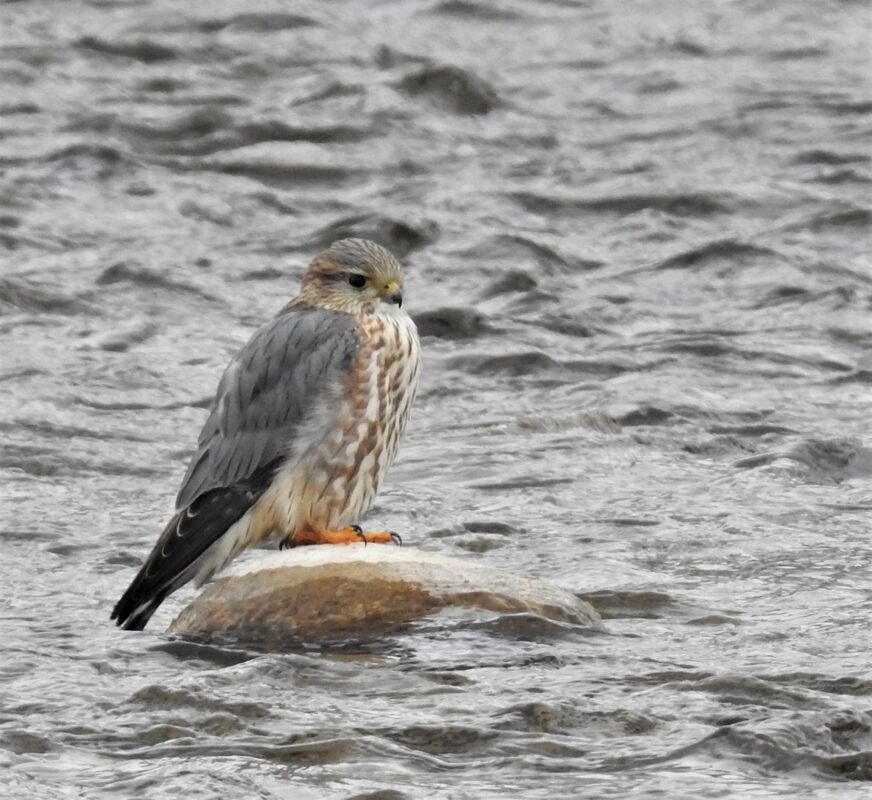
It’s possible the ones in Calgary will over winter here, city Merlins often stay instead of heading to South America like they are supposed to. Merlins just started to be city dwellers as recently as 1960, possibly at the same time as House Sparrows became plentiful. Merlins have a long history with people anyway, in medieval times they were trained as hunting falcons. They were called ‘Lady hawks’ because women favoured them. Is it because our puny lady arms would crumple under a big falcon? No, surely it’s because a Merlin’s charm is as large as they are small.
The best birding app out there is named after them in fact. If you ever want to identify a bird by sound just get the Merlin Bird ID app from Cornell Labs. It’s a miracle to hold up a phone to a singing bird and get an identification right away. It makes birding a lot easier.
Seeing a Merlin is the birding equivalent of a bolt of lightning, streaking around our residential streets.
You can find out more about Merlins here.












